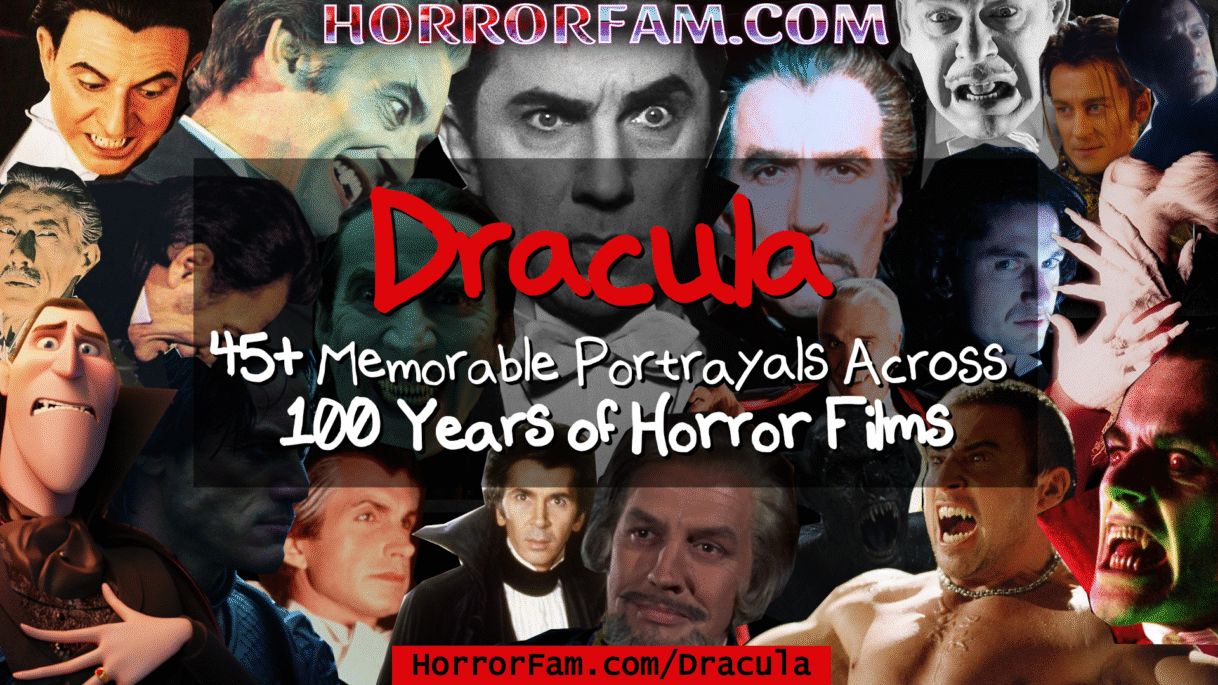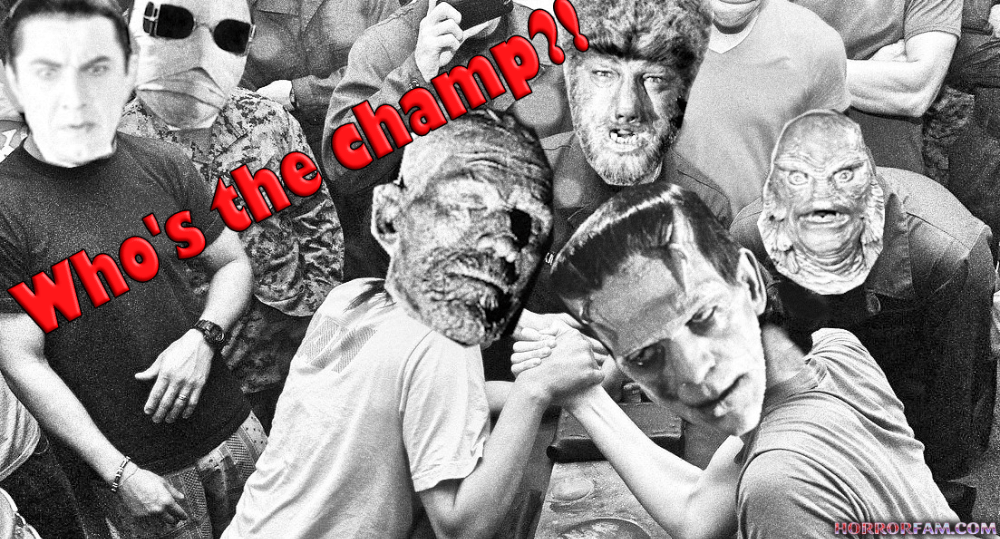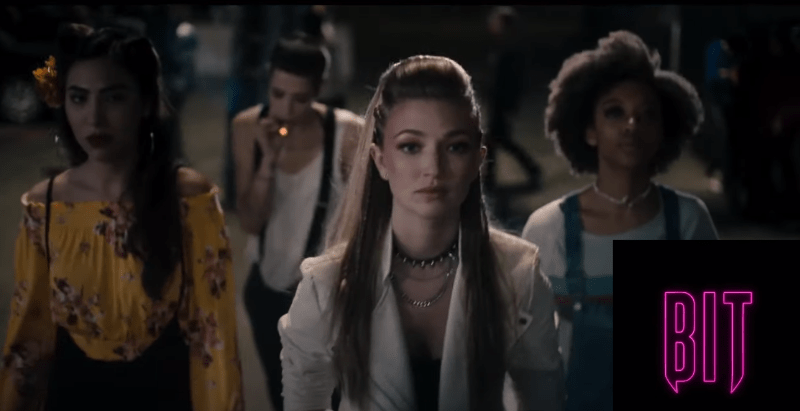“I am Dracula.” One of the most famous introduction lines in entertainment history. This legendary character stands equal to Frankenstein as the world’s most famous monster. Now, let’s discuss…
How It Began
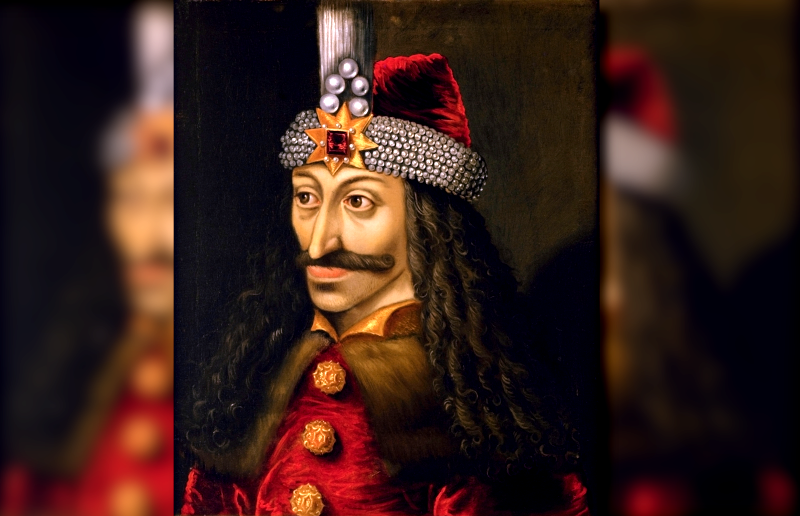
Bram Stoker wrote the novel Dracula in 1897. His inspiration for the bloodthirsty Count Dracula was a real life Romanian from the 1400s named Vlad Dracula, or Vlad the Impaler. This real Dracula was so scary mean and nasty I don’t want to talk about him. I prefer my monsters to be fictional. Read up on historical Vlad if you want a gruesome gross out.
The Dracula book is fun, especially if you’ve watched a few of the movie versions. You’ll see the parts of the book that got used, and which parts got left out. Dracula is not the matinee idol he often is in the movies. He’s pretty creepy.
The focus of the book is on the multiple heroes who fight against Dracula, and not so much on the Count himself. That’s true for most of the Dracula movies as well. But everything that happens revolves around Dracula — he’s the star player. I wish the book had a stronger ending, but it’s good enough.
“Good enough” to launch the biggest monster movie genre EVER. The vampire movie horror subgenre, starring Count Dracula and his many clones!
Okay, let’s go to the movies…
This post contains affiliate links. Our content is 100% reader-funded and if you watch a movie we’ve recommended using our links, you’ll be helping to support HorrorFam.com at no additional cost to you!
Dracula In the 1920s
Nosferatu: A Symphony of Horror (1922)
The very first Dracula movie was a German production called Nosferatu: A Symphony of Horror AKA Nosferatu: Eine Symphonie des Grauens in 1922.
The names were changed from the book — Dracula is called Orlok — but the story is basically the same as the novel. Orlok Dracula is disturbing looking. Pointy ears, pointy bunny teeth, clawed fingers. He’s even worse than described in the book. Very effective makeup job, and a very good movie, too.
An important point of movie vampire lore is introduced in Nosferatu (1922). For the first time, sunlight destroys the vampire. Before this, sunlight may have made a vampire more vulnerable, but it wasn’t instant destruction. Thanks to this movie, we acquired an effective tool for getting rid of unwanted undead.
This classic movie still holds up well, even after a hundred plus years. Check it out!
Where to Watch Nosferatu: A Symphony of Horror (1922) – with music!:
In 1924, Bram Stoker’s Dracula story became a stage play that was very successful. A Hungarian actor named Bela Lugosi starred in the play as the vampiric Count Dracula.
Universal Studios got the rights to the story and planned to produce a film version featuring their biggest horror star, Lon Chaney, Sr. Then Chaney threw a wrench in their plan by getting cancer and dying. So, the Studio turned to the man who was seemingly born to play the Count: Bela Lugosi.
Dracula In the 1930s
Dracula (1931)
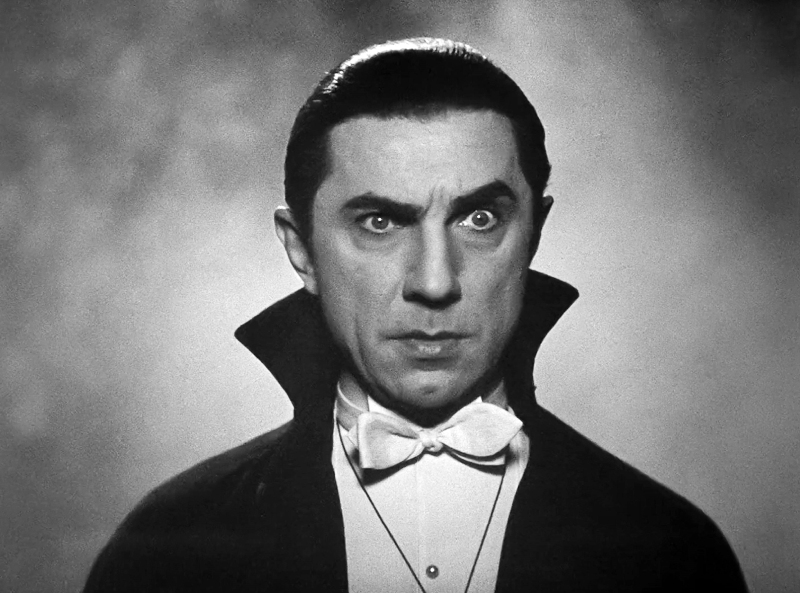
I could write a whole article on the 1931 movie, Dracula, and maybe sometime I will. But for now, I’ll keep it brief: This was the movie that launched Universal Studios series of classic monster movies. Frankenstein, The Wolf Man, The Invisible Man, The Mummy, and more were all a result of the success of Dracula.
The Lugosi Dracula became the public’s idea of what Count Dracula and vampires were all about. He was the opposite of the vampire in Nosferatu — tall, dark, and handsome. A snappy dresser who could rock a cape and not look ridiculous! This Dracula was a lady killer, literally and figuratively. Almost one hundred years since Dracula (1931) was made, and we still think of THIS as the definitive look for Count Dracula.
It’s hard for me to be totally objective in assessing this movie. It has such significance in laying the foundation for what would come later. Honestly, I think it’s got some problems. The first part of the movie, which follows Renfield’s journey through Transylvania to Dracula’s castle and his meeting with the Count, is very good, very atmospheric. Once Dracula arrives in London and the movie becomes basically a stage play, the story slows to a crawl. A Director with more style might have juiced it up, but Tod Browning seems to have his camera nailed to the floor most of the time. I know Browning directed some famous movies, but his work on Dracula seems lazy.
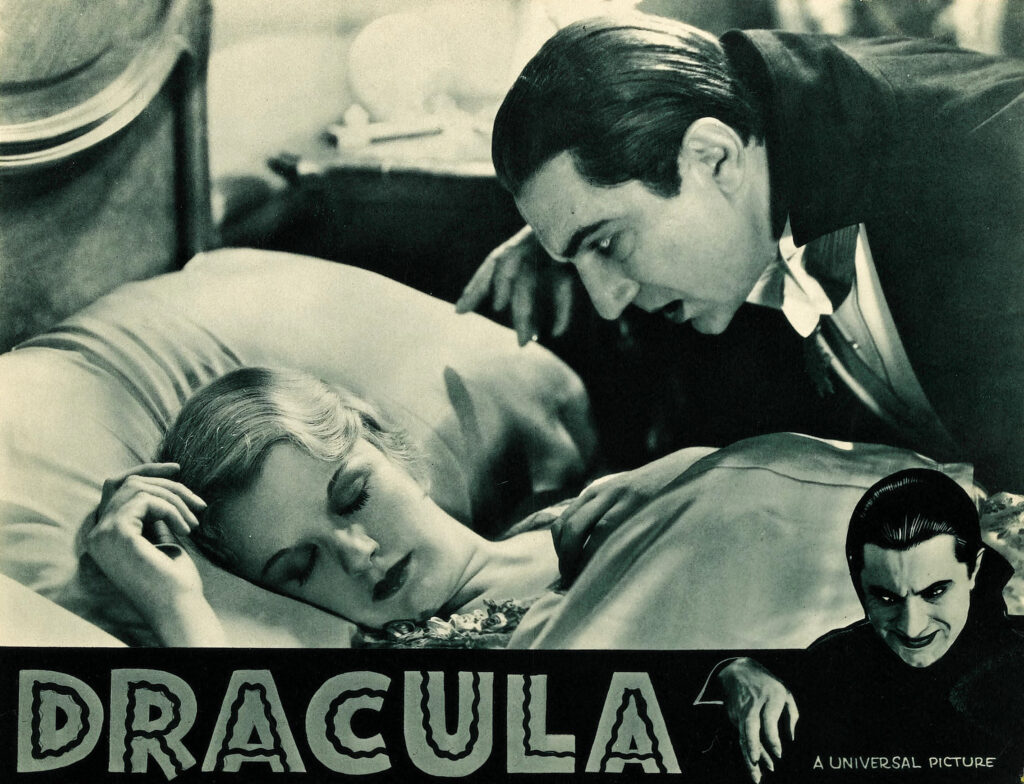
The actors, with the exception of Helen Chandler, are perfect. Special shoutouts to Edward Van Sloan as Van Helsing and Dwight Frye as Renfield! When I saw this movie as a little kid, I was more frightened of Renfield than I was of Dracula. Good job! Helen Chandler, as the object of Dracula’s dark desire, gives off zero heat. With the rest of the cast running in overdrive, she’s barely in second gear. Too bad. She is quite believable in her hypnotized zombie-like state!
The climax of the movie is decent, with Dracula dispatching Renfield in dramatic fashion. Dracula himself doesn’t get such a showy exit, getting staked off-camera by Van Helsing. Still, it gets the job done.
1931’s Dracula has its share of flaws, but it also has a lot to love. If you’ve ever enjoyed a vampire movie, or even a bowl of Count Chocula cereal, you can thank this one movie for getting the ball rolling. Respect.
Where to Watch Dracula (1931):
Spanish Dracula AKA Drácula (1931)
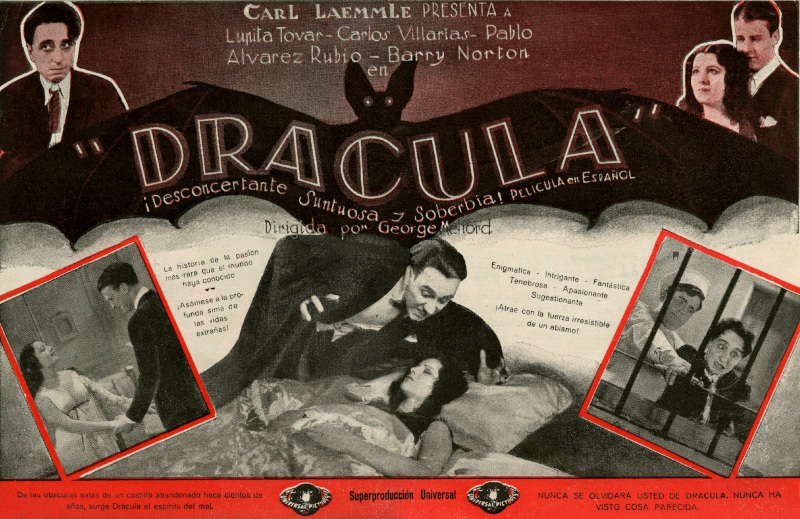
There was another Dracula movie made in 1931 by Universal Studios. The very same story, with a key difference. This version was the Spanish language Dracula.
Before the filmmakers figured out how to dub dialog onto a movie, it was common to remake the movie with a different cast who were fluent in Spanish. When the Bela Lugosi Dracula film crew went home at the end of the day, the Spanish language crew came in and filmed all night, using the same sets.
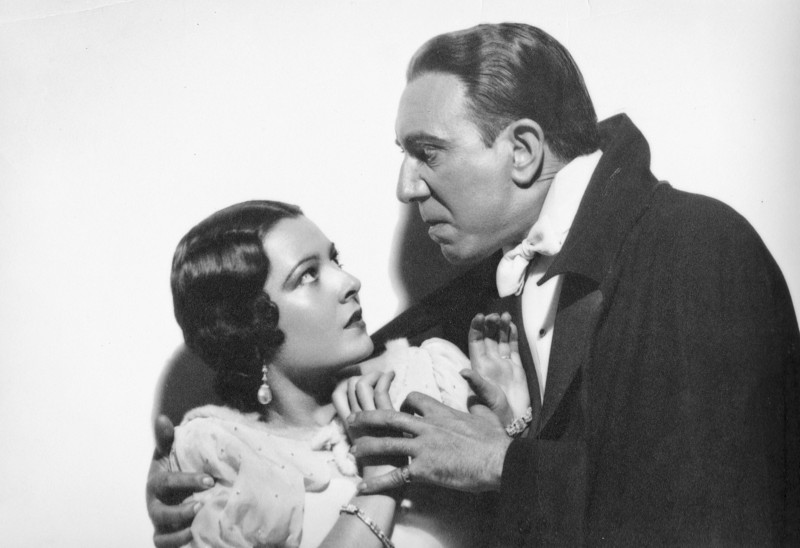
It’s fascinating to watch the original Dracula movie remade this way. I think Drácula is superior in some aspects to the Lugosi version. Director George Melford did a better job staging things and keeping it moving than Tod Browning.
The problem, with the exception of Lupita Tovar, is the cast. They all do a decent job, but they’re not as iconic as the actors in the English version. Carlos Villarías can’t hold a candle to Bela Lugosi as Count Dracula. In a perfect world, I’d like to see the Spanish version with the English language cast and Lupita Tovar taking Helen Chandler’s place. Until there’s a perfect world, check out this version of Dracula alongside the original. It’s a worthwhile double feature.
Where to Watch Drácula AKA Spanish Dracula (1931):
Dracula’s Daughter (1936)

The first direct sequel to Dracula came out in 1936, titled Dracula’s Daughter. The story follows the title character’s efforts to renounce her vampiric tendencies and just play nice.
Dracula’s Daughter is pretty good, and worth a look. However, Count Dracula is still dead in the movie, and the daughter steals his body from the morgue and burns it. So, let’s stay on track and move on to a movie where the Count is up and about, shall we?
Where to Watch Dracula’s Daughter (1936):
Dracula In the 1940s
Son of Dracula (1943)

Lon Chaney, Jr. was the star of The Wolfman in 1941, another big hit monster movie for Universal. The Studio decided that Lon Junior should follow in his famous father’s footsteps, and portray any and all of their fantasy characters. So, we saw him as Frankenstein in Ghost of Frankenstein, as Kharis the Mummy in three movies, and once — and only once — as Count Dracula. That movie was Son of Dracula.
Lon Chaney, Jr. is totally right for playing the Wolf Man, and equally wrong for playing Dracula.
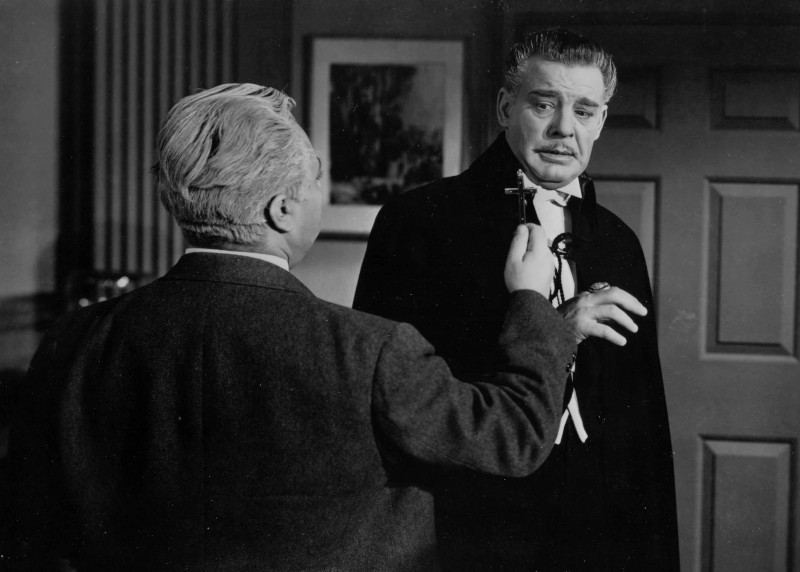
They do everything possible to convince you he’s suave and sophisticated, but Lon Chaney, Jr. just comes off as a brutish thug playing dress up. Not his fault, and he does as good a job as he’s able, but he’s just the wrong guy for the part.
However, the Son of Dracula is one of Universal’s best efforts in every other respect. It’s moody and spooky, with very good special effects (for the time), and it moves at a good steady pace. If Bela Lugosi had been cast instead of Chaney, this would have been Universal Studio’s best Dracula movie. Definitely give Son of Dracula a looksee. Think about what might have been.
Where to Watch Son of Dracula (1943):
Return of the Vampire (1943)

Speaking of Bela Lugosi, in 1943 he was playing Dracula under a different name in the movie Return of the Vampire. The vampire is called Armand Tesla.
Return of the Vampire was intended to be a new Dracula movie from Columbia Studios, but Universal threatened a lawsuit, so they changed the names of the characters. I think it’s still a Dracula movie.
I saw Return of the Vampire on television when I was a little kid, and really enjoyed it. Bela Lugosi is great as the vampire, and he’s got a werewolf assistant who looks a lot like the Lon Chaney, Jr.’s Wolf Man – but he can talk! Fun stuff.
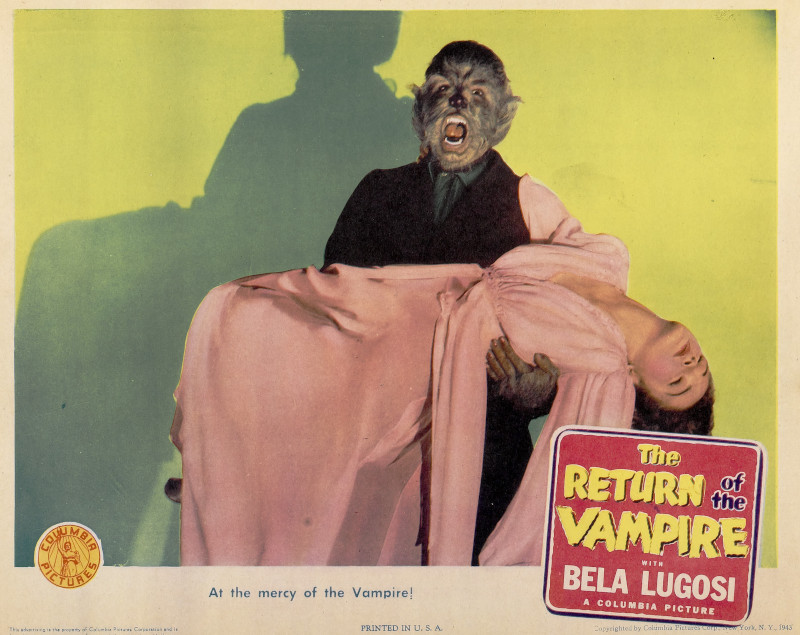
Return of the Vampire is also notable for having the first on-screen vampire disintegration. The effects people made a thin wax life mask of Bela Lugosi, and placed it over a skull. Then they used heat guns to melt the wax mask and reveal the skull beneath. This same technique was used for the melting Nazis in the climax of Raiders of the Lost Ark! It looks amazing, but it’s too quick. The studio worried it was much too gruesome for audiences to handle. Maybe they were right? Anyway, Lugosi made a lot of awful movies, but this is one of his very BEST. And we all know Armand Tesla’s real name!
Where to Watch Return of the Vampire (1943):
House of Frankenstein (1944) & House of Dracula (1945)
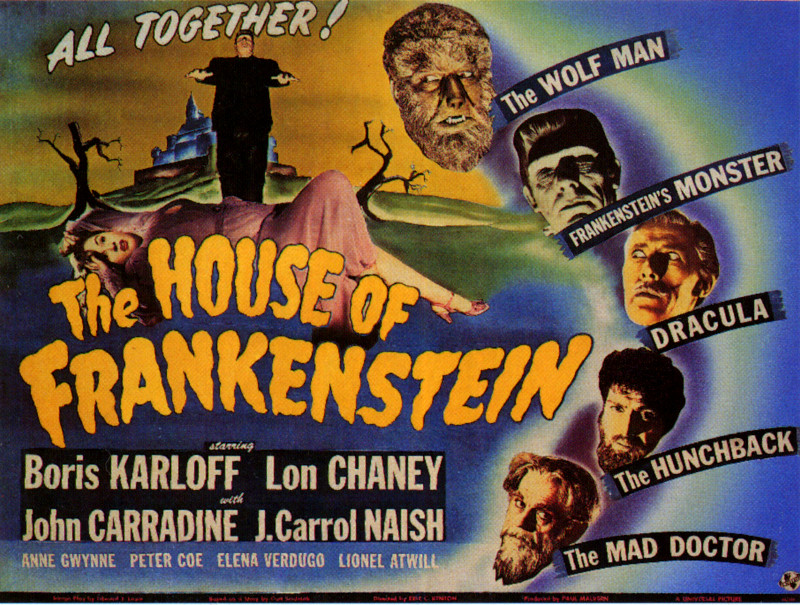
Back at Universal Studios, Dracula turns up in two movies in 1944 and 1945. The first is House of Frankenstein, and then in House of Dracula. Both these House party movies have Frankenstein, the Wolfman, and Dracula, along with some Mad Doctors and Hunchbacks.
John Carradine takes on the role of Count Dracula, and does a good job. In both “House of” movies, the sequences featuring Dracula are at the start of the movies. Dracula is reduced to dust before the other monsters show up. So, they’re like two mini-Dracula movies.
Both of the Dracula-focused sections in House of Frankenstein and House of Dracula are pretty fun twenty-minute stories, although it would have been nice to see the Count live through the entire movies.
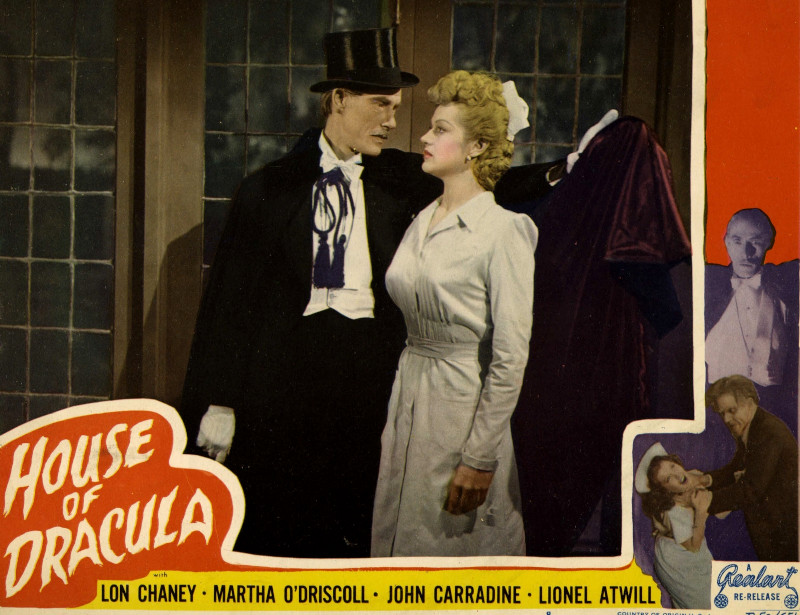
House of Frankenstein has a great scene when Boris Karloff pulls the wooden stake out of Dracula’s skeletal chest, and we watch Dracula slowly regenerate, growing veins and muscles and skin and tuxedo. (Ever the sharp-dressed man.)
An interesting side note regarding House of Dracula: This is the movie in which Larry “the Wolf Man” Talbot is cured of his full moon werewolf curse. Mad Doctor science in action! He seems to have relapsed by Abbott and Costello Meet Frankenstein, but at the end of House of Dracula movie, he’s just fine!
Where to Watch House of Frankenstein (1944):
Where to Watch House of Dracula (1945):
Abbott and Costello Meet Frankenstein (1948)
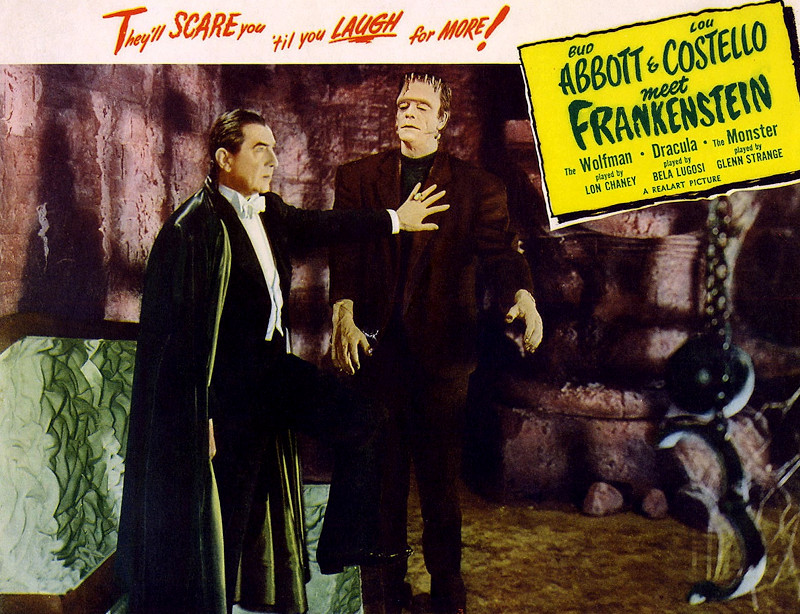
Which brings us to one of my all-time favorite movies, Abbott and Costello Meet Frankenstein, in 1948. If you haven’t seen this one, you’ve missed a classic in both horror and comedy movies.
I’ve talked about Abbott and Costello Meet Frankenstein in previous articles, so I won’t go on too long. In addition to Frankenstein and the Wolfman, A & C meet Dracula as well.

This was Bela Lugosi’s second and last time playing Count Dracula on screen, and he is great. He’s smooth, he’s menacing, in a couple of scenes he’s even funny. It’s clear why several generations of horror fans think of Bela as the best movie Dracula. It’s a shame he only did it twice.
Put Abbott and Costello Meet Frankenstein on your MUST SEE bucket list. It was the last hurrah for Universal Studios’ original classic monsters, and they go out with a bang.
Where to Watch Abbott and Costello Meet Frankenstein (1948):
Dracula In the 1950s
The 1950s was the decade when the atomic bomb was the dominant ‘monster’ in movies. Giant ants, grasshoppers, people, Godzillas… all brought about by scary nuclear energy. We had quite a bit of trouble from alien space invaders as well.
What there wasn’t much of were the classic monsters from earlier decades. The Frankensteins, werewolves, and vampires that thrilled previous generations were considered passe in the atomic age. So, the early 1950s were hard times for the old-school monster fans.
Horror of Dracula (1958)
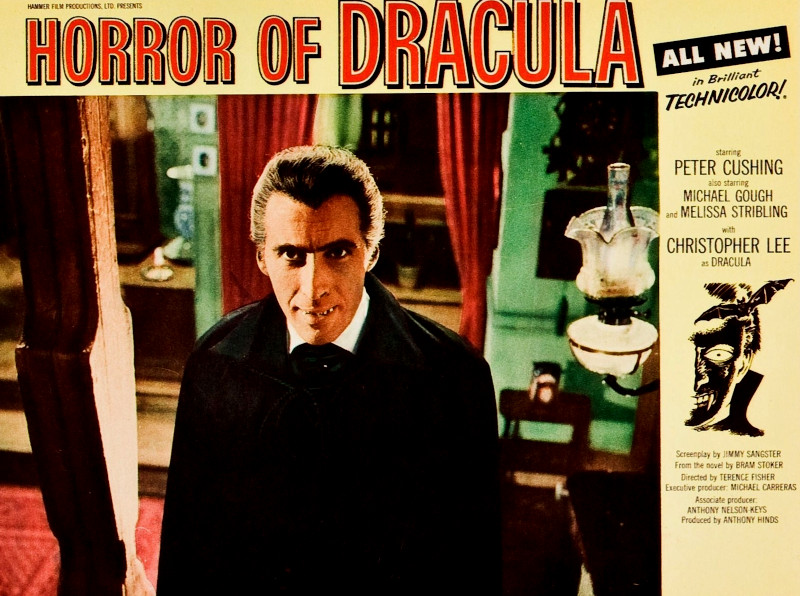
Count Dracula lay dormant until 1958, when England’s Hammer Film Productions released Horror of Dracula; or simply Dracula, as it was titled in England.
Horror of Dracula blew the minds of the monster fans of the ’50s. It was in vibrant color, it was bloody, and it was overtly sexy (for the time). The movie is a retelling of the basic Dracula storyline. Dracula leaves his castle in Transylvania, puts the bite on some innocent city girls, runs afoul of Doctor Van Helsing, and is pursued back to his castle for a climactic showdown. It’s a fast and furious ninety minutes.
Christopher Lee portrayed the Count in seven movies for Hammer Films, and this first movie is the best of the seven. It isn’t my sentimental favorite, but it’s excellent. For me, Christopher Lee is Count Dracula. When he first appears in the movie and introduces himself to Jonathan Harker, he’s a sophisticated charmer. A short while later, when Harker is about to be vamped by a vampire bride, Dracula shows his true colors. He bursts through the doors, snarling like a wolf, his eyes blood red (contact lenses) and long fangs dripping blood. He charges into the room, throws the two apart, and you think Dang! This guy really is one scary monster! The audiences in 1958 had never seen anything like it, and they loved it.
A side note: This was the first movie, other than Nosferatu, that gave Dracula actual fangs. None of the Universal Studios’ movie Draculas had fangs, in spite of the constant references to “two small puncture marks in the victim’s throat.” Kudos to Hammer for the extended eye teeth!
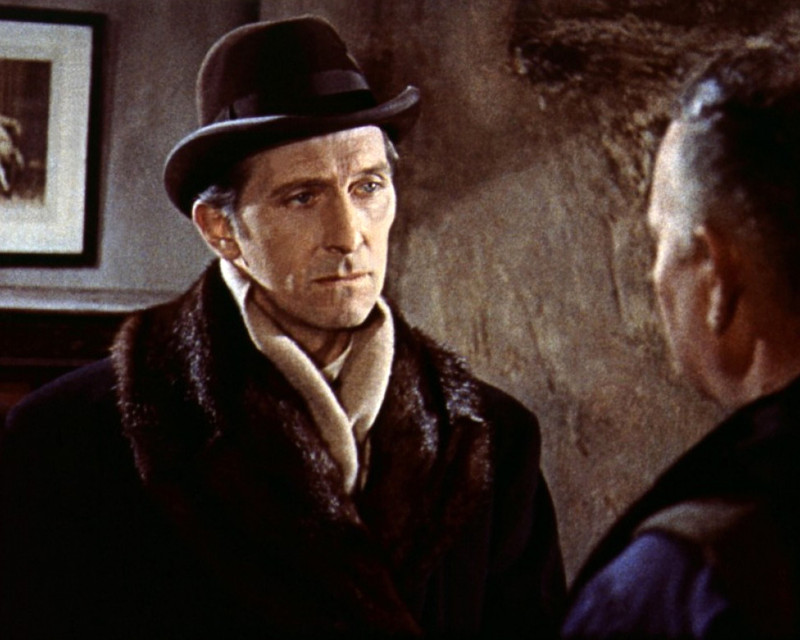
Another character, nearly as important as Christopher Lee’s Count Dracula, is also introduced in this movie: Peter Cushing as Professor Van Helsing, vampire hunter. Cushing is the heroic and fearless nemesis for Count Dracula. He’s the guy who knows what’s what when faced with the living dead. Cushing is Christopher Lee’s equal in their respective roles, and they’re great together.
The climax of Horror of Dracula is a mano y mano battle between Van Helsing and the Count. It’s action-packed and nothing like previous vampire movie wrap-ups. No having Van Helsing disappear offscreen to quietly stake the Count while he’s sleeping in his coffin. This is a knockdown drag out BRAWL. Fun stuff! And people clamored for more. Hammer Films was glad to oblige. (Look for an abundance of Dracula-focused Hammer horror in the 1960’s films covered below!).
Where to Watch Horror of Dracula (1958):
Dracula In the 1960s
We’ve made it into the 1960’s! After a brief slumber during the early ’50s, Count Dracula has returned, and has remained with us ever since.
The late 1950’s and early 1960’s saw the birth of what became known as The Monster Kids. This was the generation that grew up watching the old classic monster movies that were released to television at that time. Suddenly, there was a flood of media and merchandise, all about monsters. Toys, model kits, magazines, masks and movies. Count Dracula was there, riding the wave.
Brides of Dracula (1960)
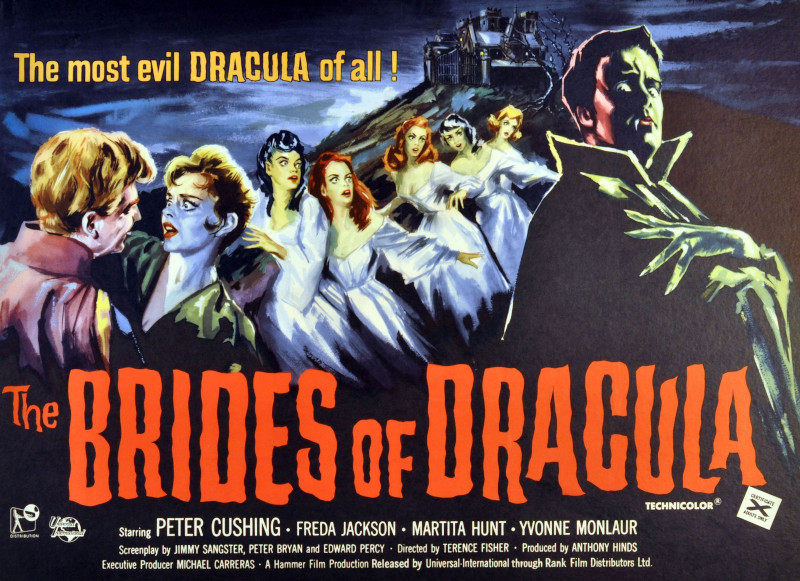
Much like Universal’s first Dracula sequel, Dracula’s Daughter, thesecond film in the Hammer Films’ series also doesn’t have Count Dracula in it, despite its title. However, it’s still a great movie and an important part of Dracula’s horror history — a worthwhile watch to add to your Dracula Movie Watching Marathon.
Brides of Dracula’s story follows Peter Cushing as Van Helsing, fighting another vampire aristocrat, Baron Meinster. This is a good movie, even without Dracula. Cushing is a powerhouse for good, and we’re treated to another action-packed climactic showdown. One of Hammer’s best.
Where to Watch Brides of Dracula (1960):
The Munsters (1964 -1966)

In 1964, we were treated to what remains one of the oddest, but most beloved, versions of Dracula: Grandpa Munster, from the TV show, The Munsters.
Although Grandpa Munster behaved like a traditional mad scientist rather than a vampire, both he and his daughter Lily have the surname, Dracula. They’re the undead, they just don’t make a big deal about it…
In the 2022 Rob Zombie movie reboot of the show, Dan Roebuck as Grandpa Munster seems a bit more overt about who he really is, The Count!
Where to Watch The Munsters TV Show:
Dracula, Prince of Darkness (1966)
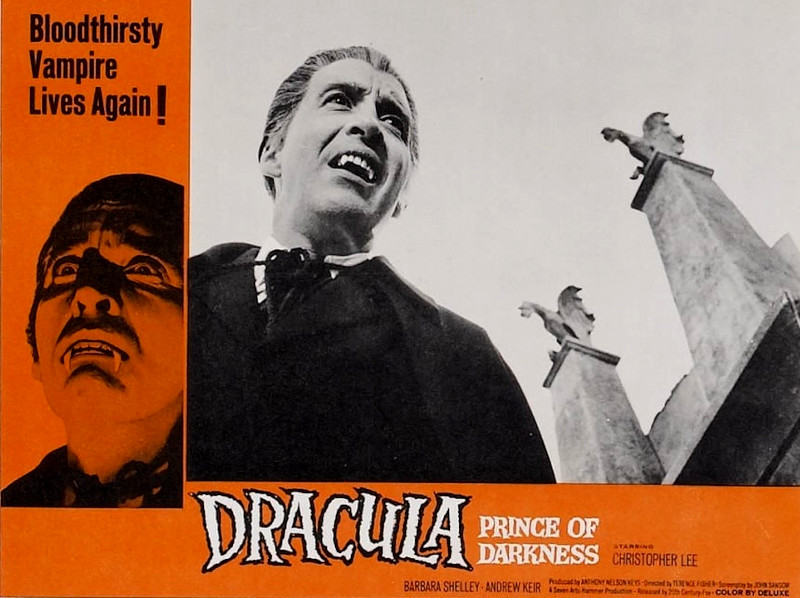
Back on the big screen, in 1966 Christopher Lee finally returned to Hammer Films and to the role that made him famous.
Dracula, Prince of Darkness is a mixed bag for me. Whenever Dracula is on the screen, the movie’s great. The trouble is with the long stretches in-between.
Still, it’s worth seeing. There’s a killer (literally!) resurrection scene for the Count, and another scene that is lifted from the book, where Dracula opens a cut in his chest and makes his victim drink his blood. Dracula, Prince of Darkness is a bit of a disappointment after an eight year wait, but it was still good to have Christopher Lee back in black.
Where to Watch Dracula, Prince of Darkness (1966):
Dark Shadows (1966-1971) & House of Dark Shadows (1970)
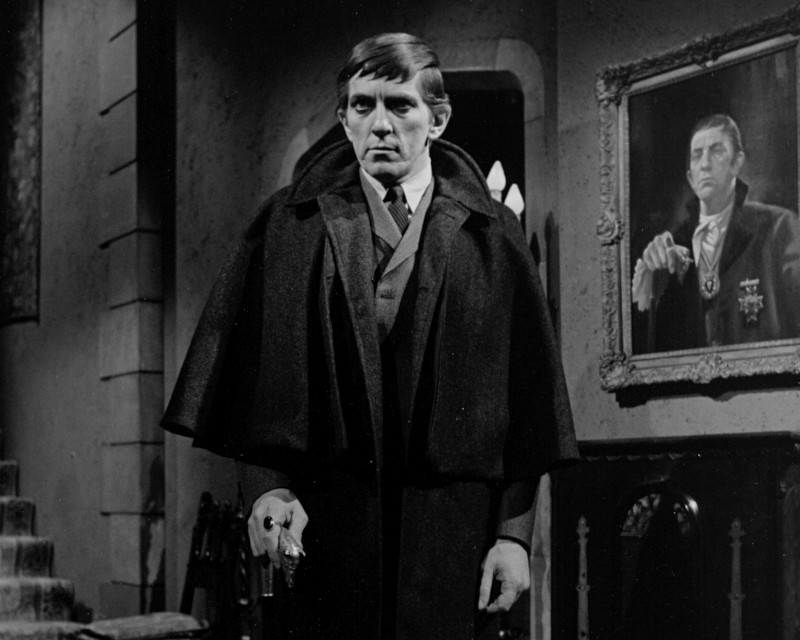
On the television, another vampire very much in the mold of Count Dracula became a horror icon: Barnabas Collins, on the show Dark Shadows.
Barnabas was the star of the half hour weekday afternoon soap opera, and it was a hit with teens as well as adults. Once again, the handsome, well dressed and darkly romantic vampire did that thing they do.
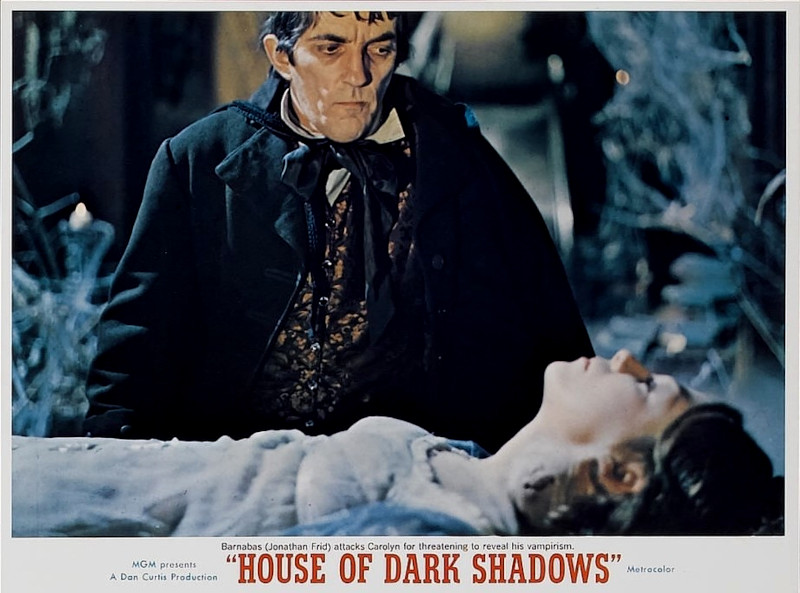
The show has been in reruns forever, and it’s goofy fun, but it is slooooow. I recommend watching the 1970 movie version, House of Dark Shadows. It has much better production values, acting, and special effects. Excellent makeup work by Dick Smith of The Exorcist movie fame. Best of all, you get a whole season’s worth of TV storyline boiled down to a fast 90 minutes!
Where to Watch Dark Shadows TV Show:
Where to Watch House of Dark Shadows (1970):
Dracula Has Risen from the Grave (1968)

Two years later, in 1968, Dracula Has Risen from the Grave premiered. Christopher Lee returned from the somewhat comical watery demise he suffered at the conclusion of Dracula, Prince of Darkness.
Although Horror of Dracula (1958) is the best in the Hammer Dracula series, Dracula Has Risen from the Grave is my personal favorite. This was the first one I saw on the big screen, and I thought it was awesome. Dracula was just too cool for school, and this had to be the sexiest and bloodiest G-rated movie ever made. (Did the ratings board actually watch this movie?).
Dracula is out for revenge on the Priest who nailed a big gold cross to the door of his castle, barring his entrance. He puts the hypnotic whammy – and bite – on the Priest’s niece, Veronica Carlson. Who could blame him? Carlson’s movie career was brief, but she is fondly remembered from this and from Frankenstein Must Be Destroyed. (She was menaced by Peter Cushing as Doctor Frankenstein in that movie.)
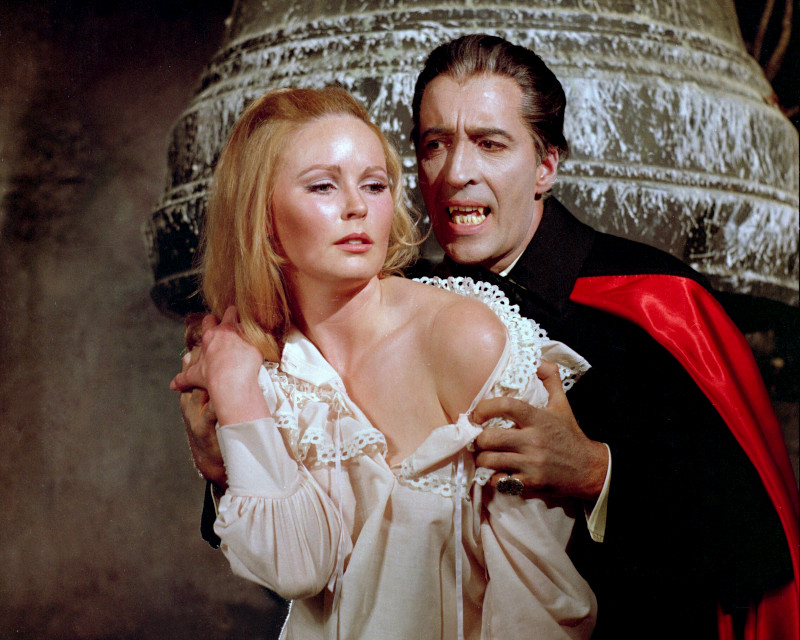
Like a lot of other seventh graders, Veronica was a big crush for me in 1968. I thought Christopher Lee must be the luckiest guy on earth. If I only had Dracula’s hypnotic whammy power, I would stand a chance of getting a girl to look my way. Instead, I was forced to develop a rudimentary personality and a sense of decency. I guess that’s preferable to drinking blood and getting wooden-staked through the heart, but I was immaturely envious at the time…
Spoilers: Dracula Has Risen from the Grave concludes with Dracula impaled on the pointy end of the big gold cross, and he disintegrates into red dust.
Seemed pretty permanent at the time, but Count Dracula was back again in 1970!
Where to Watch Dracula Has Risen from the Grave (1968):
Dracula In the 1970s
Count Dracula (1970)
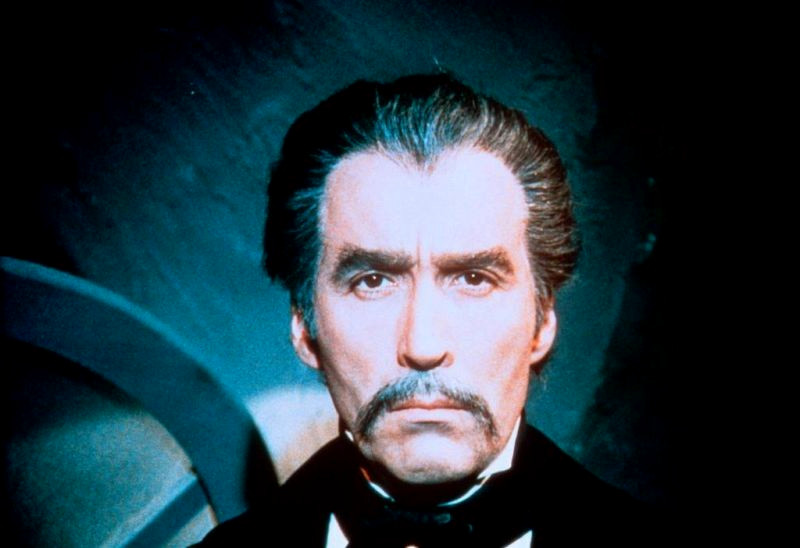
Christopher Lee had said in interviews how he wanted to play Dracula as portrayed in the novel, with a moustache and starting out old, and growing progressively younger. Director Jess Franco gave him that chance in the movie, Count Dracula.
Once again, Christopher Lee does a good job in a mediocre movie. Count Dracula is worth seeing once, but I found it slow, dull and kind of cheap-looking. I’m not a big fan of Jess Franco films, of which there are (too) many, and this is actually one of his better efforts. That still isn’t saying it’s good.
I’m happy Christopher Lee got to have a big moustache like he’d wanted…
Where to Watch Count Dracula (1970):
Taste the Blood of Dracula (1970)
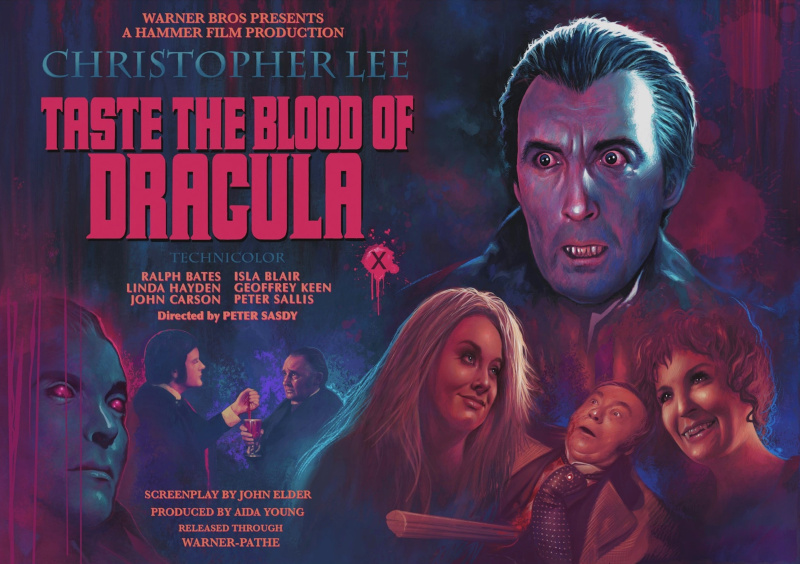
Returning to Hammer, Dracula came back in Taste the Blood of Dracula. I also saw this in the theater back in the day, and enjoyed it.
Three “model citizen” father figures are secretly sneaking out nights getting their kink on and thrill seeking. They’re approached by Dracula disciple Ralph Bates who promises them a good time performing the ritual that will resurrect Count Dracula. They end up having a lousy time, and they somewhat accidently murder disciple Bates. They flee, but the ritual has worked, and Dracula is back, vowing revenge on the men who murdered his servant.
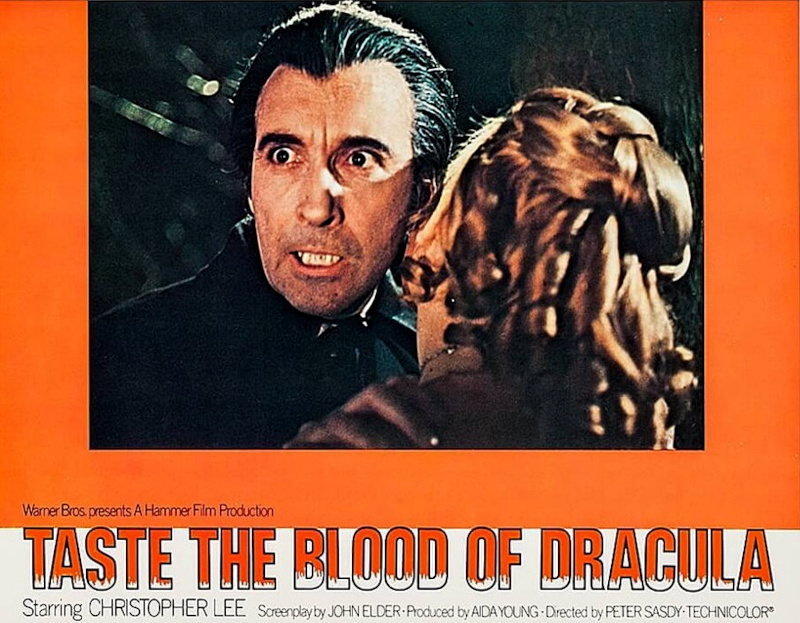
Count Dracula achieves this by vamping the teenage kids of the bad dads, and getting their own children to murder them. Fun stuff, but again, I wish Dracula had more screen time.
Linda Hayden, who also starred in the very creepy Blood on Satan’s Claw, is perfect as the daughter who shifts from angelic to demonic. A special bonus treat is the chance to see the actor who voiced Wallace in the Wallace and Gromit clay animation cartoons, playing one of the sinful dads. Cheese, Gromit!
Where to Watch Taste the Blood of Dracula (1970):
Count Yorga, Vampire (1970)
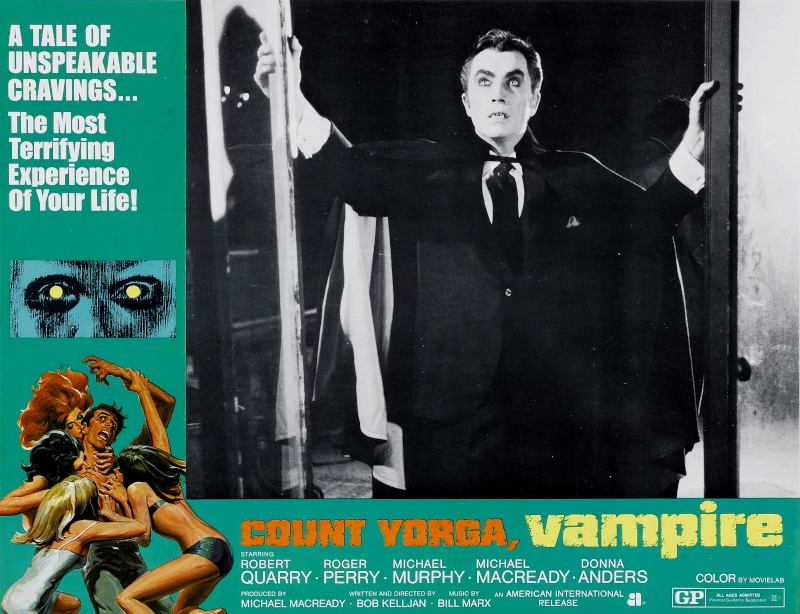
Back in America, in 1970, AIP Studios released a version of Dracula, only it (and he) was called, Count Yorga, Vampire. Another one I saw that year in the theater and liked.
This time Dracula/Yorga has come to Los Angeles. He’s living in a mansion in the Hollywood Hills and hosting seance parties for trendy twenty-somethings. It’s all just a cover for sourcing new victims for the wicked Count.
Robert Quarry is good as Yorga. Smooth when he’s charming the ladies, and scary when he’s in attack mode. Count Yorga, Vampire was originally planned as a cheap sexploitation quicky, but they decided it was turning out so well they’d lean into the horror angle more and go legit. It was a good call, and Count Yorga was one of AIP’s biggest hits that year.
Where to Watch Count Yorga, Vampire (1970):
The Return of Count Yorga (1971)

Count Yorga returned the following year in the imaginatively titled, The Return of Count Yorga. This is a decent sequel, with a bigger budget, some better actors, and more polish, but the first movie is superior. It’s just over all creepier. But together, these films make a fine double bill.
Where to Watch The Return of Count Yorga (1971):
Scars of Dracula (1970)

Back in England at Hammer Films, we got another Dracula film in 1970: Scars of Dracula, again with Christopher Lee.
Scars of Dracula was the last Hammer Dracula with Christopher Lee that takes place in the 1800s. On the plus side, Lee has more screen time and dialogue than most of the other movies.
Once again, Christopher Lee makes a great Count Dracula. There are also parts of the movie that are lifted from the novel, like Dracula crawling face down on the outside castle wall, like a lizard.

On the downside, the supporting characters are even blander than usual, the special effects, especially the bats, are cheesy, and the sets look a little cheap. Even so, I still like this movie and would recommend it.
I hadn’t realized until I began writing this article that the 1970’s seem to be a golden age for Count Dracula! I think he made more appearances in this decade than in any other. Fact check me if I’m wrong…
Where to Watch Scars of Dracula (1970):
Dracula VS Frankenstein (1971)
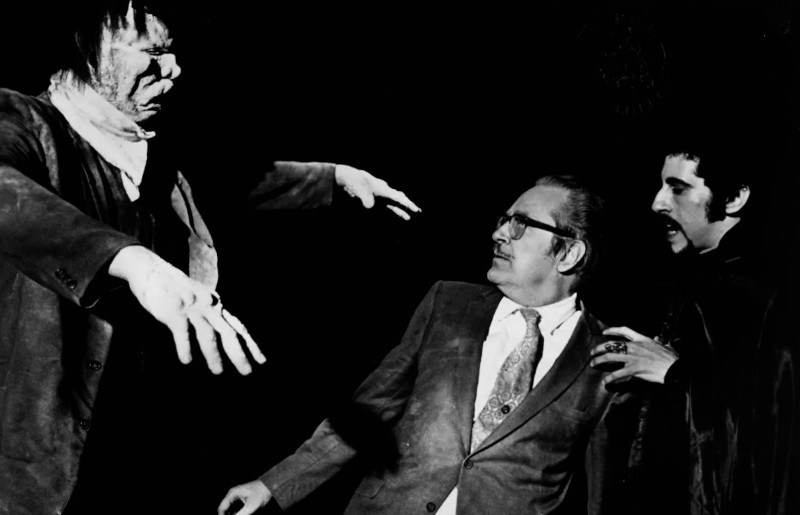
In 1971, back in the USA, Dracula vs Frankenstein was released. This was a shoestring budget, mess of a movie. I include it here because it does feature the two monsters in the title, and it was sadly Lon Chaney Junior’s last film appearance.
Back in the ‘40s, Lon Chaney, Jr. played both Frankenstein and Count Dracula. In this movie Lon is the mute zombie servant to an enfeebled Doctor Frankenstein. It was a sorry end note for his career.
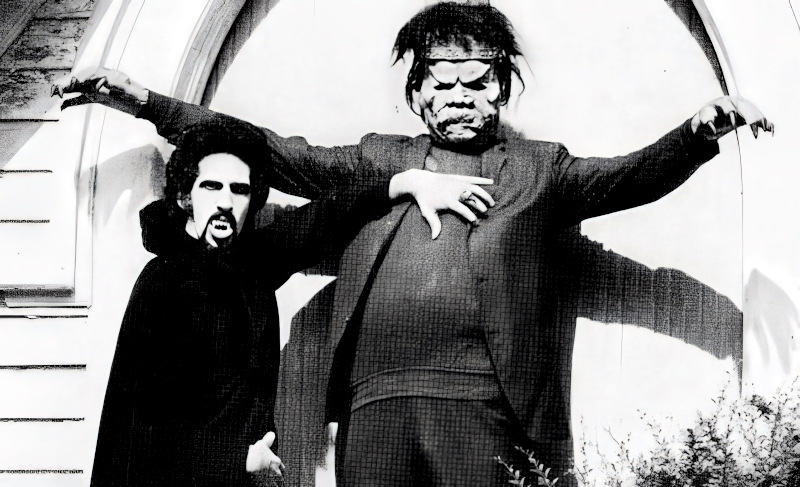
Still, on the plus side, this movie does have my personal pick for the ugliest version of Frankenstein’s monster. A wacky ending, too, with Dracula fighting the monster and pulling off Frankenstein’s arms, and then pulling off his head! This isn’t one of those “fight ends in a draw” stories, so points to Dracula for standing tall.
Where to Watch Dracula VS Frankenstein (1971):
Dracula In Comic Books
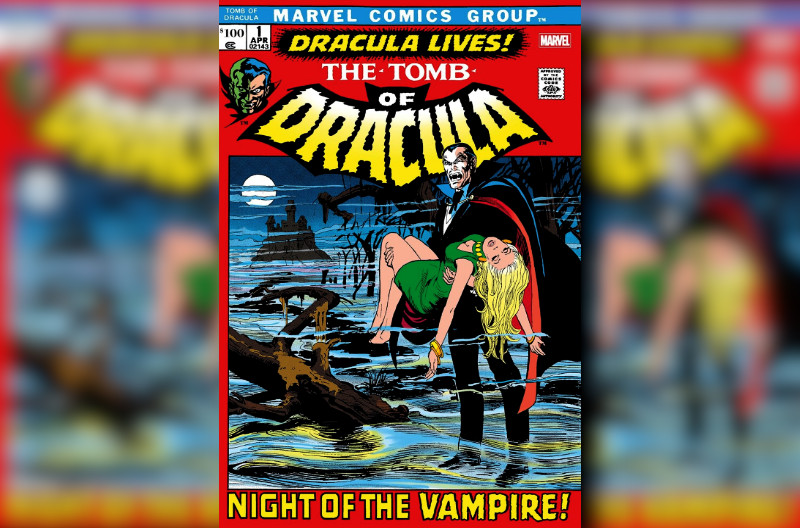
In 1972, Dracula was a triple threat – appearing on film, television, and comic books! At Marvel Comics, home of Spider-Man and Captain America, Count Dracula got his own comic book series, Tomb of Dracula. The series ran throughout the ’70s, and was a moderate success. This was the comic book that first introduced the vampire hunter named Blade, who would later star in three Marvel movies of his own. Count Dracula still turns up in Marvel comics from time to time.
You can purchase the Tomb of Dracula comic book collection on Amazon!
Sesame Street (1972)
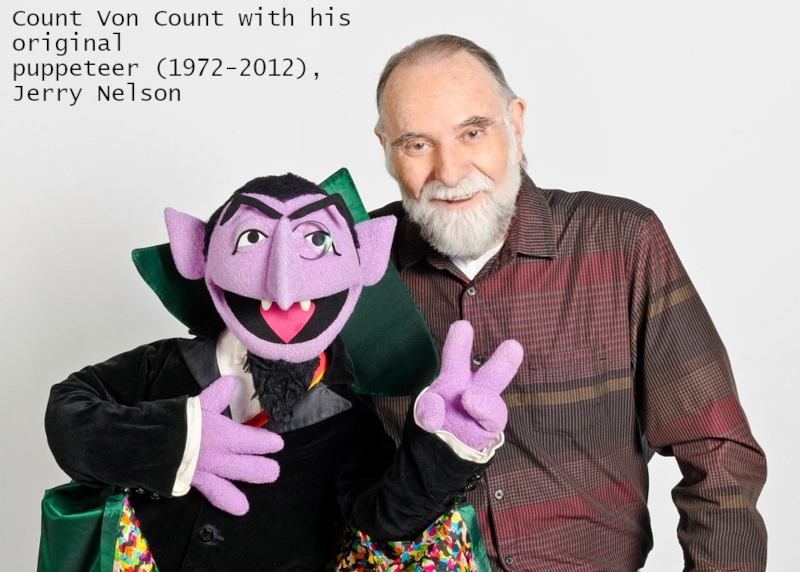
On television, Sesame Street gained a new Muppet. Count Von Count joined Bert, Ernie, and Big Bird. The Muppet Makers freely admitted their new math wiz was based on Bela Lugosi’s Dracula portrayal. Count them! One! One undead educational puppet! Ha ha ha!
Where to Watch Sesame Street (1969 – present):
Dracula A.D. 1972 (1972) & Satanic Rites of Dracula (1973)
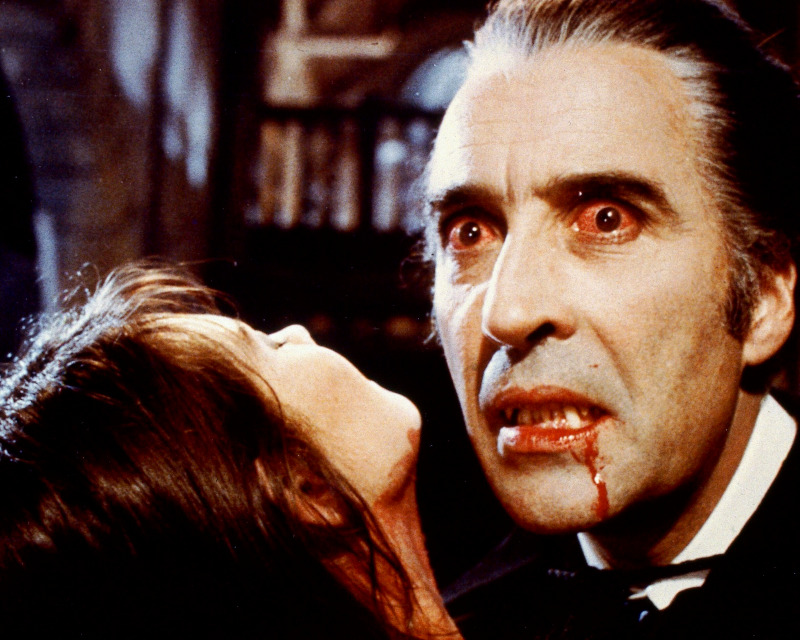
Next we have, Dracula A.D. 1972, again with Christopher Lee. This movie, and its sequel the following year tried to make Dracula films more hip and happening. Hammer figured that bringing Dracula into swinging mod London would excite the young folks. Really bad call.
Dracula A.D. 1972 and The Satanic Rites of Dracula seemed waaay dated when they were first released, and have aged worse than any of the other movies in the Hammer Dracula series.
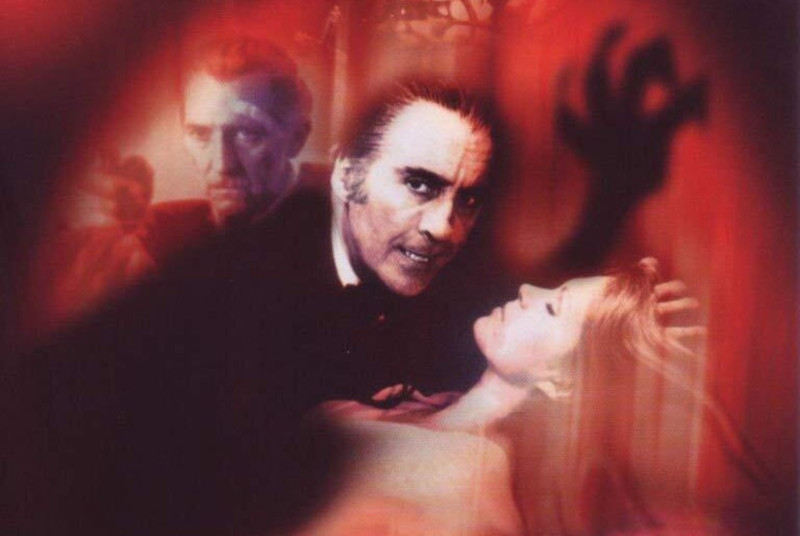
On the plus side, both these movies reunite Peter Cushing (playing his own Grandson) as Van Helsing and Lee as Dracula. They’re older now, but they still can dominate their scenes like they used to. If you’re a fan of the Hammer Dracula films, and I am a fan, check these out. There’s enough good in them to make watching worthwhile.
After Satanic Rites of Dracula, Christopher Lee said “no, thanks” to playing Dracula in any more Hammer Films. Too bad, but understandable. Lee went on play a staggering number of villains and heroes in the years ahead of him. He was one of the greats, and I’m glad he was with us for so long.
Where to Watch Dracula A.D. 1972 (1972):
Where to Watch Satanic Rites of Dracula (1973):
Blackula (1972)
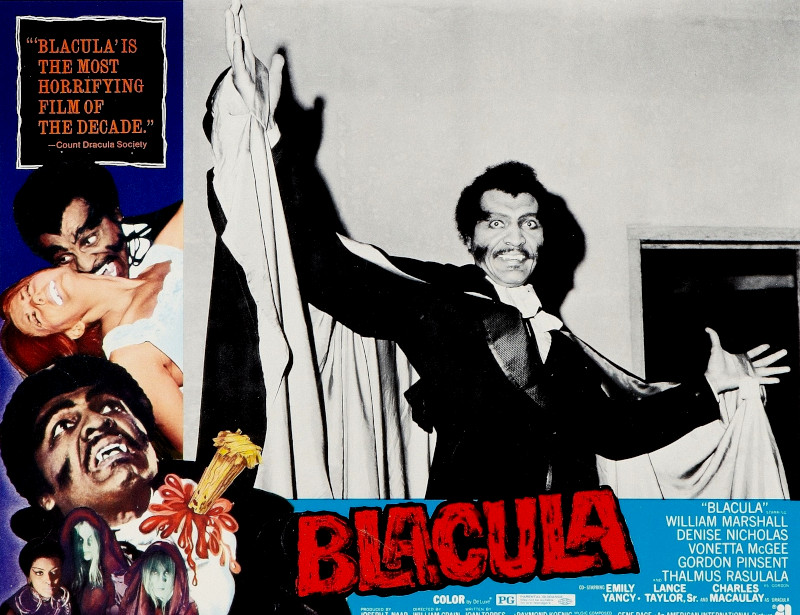
In 1972 America again, Count Dracula makes a brief but important appearance in the movie, Blacula. Charles Macaulay plays the Count who turns an African prince into a vampire, then locks him in a coffin to stay thirsty forever. Dracula mocks him by giving him the name Blacula.
Naturally, the African prince gets released and goes on a bloody adventure in 1972 Los Angeles.
This movie is not too bad. William Marshall is a dignified and powerful vampire Blacula. He was also great as the King of Cartoons on Pee Wee’s Playhouse in the 1980s.
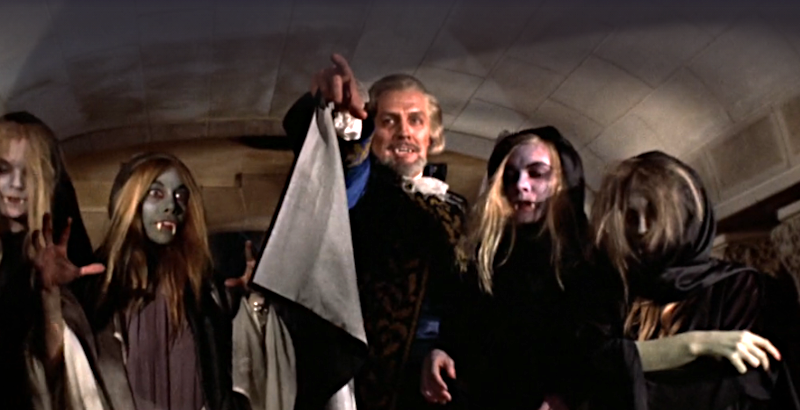
The portrayal of Dracula himself isn’t flattering, but it works fine for this movie. If you enjoy this one, Scream, Blacula, Scream is its sequel.
Where to Watch Blacula (1972):
Dan Curtis’ Dracula (1974)

In 1974, Producer-Director Dan Curtis made a TV movie version of Dracula, with Jack Palance playing the Count.
This movie follows the same basic format as the other Stoker’s book-to-movie adaptations. What was special here, at least to my thinking, was adding the “lost love” angle to the story.
Dan Curtis used this previously in the Dark Shadows series, where vampire Barnabas pursued the gal who looked just like his sweetie from 200 years ago. This was also what motivated the Mummy in the old Universal series from the ’40s. “She looks like my former one true love!”
The “reborn lost love” story angle may be old, but it was new to the Dracula character. Previously, Dracula was just an opportunistic horn dog. He sees what he likes and he goes after it. I’m not saying this new facet of his personality is bad, but it was definitely different. So many of the vampire/Dracula movies that have come along since have used this device, it’s now accepted as cannon.
Dracula may now be a tragic romantic, but he’s still a dead man who drinks blood to stay alive. It takes all kinds…
Jack Palance does a pretty good job as Dracula. I wish the movie had a bigger budget and more atmosphere, but for a 1970’s TV movie, it’s better than most.
Where to Watch Dan Curtis’ Dracula (1974):
The Legend of the 7 Golden Vampires (1974)
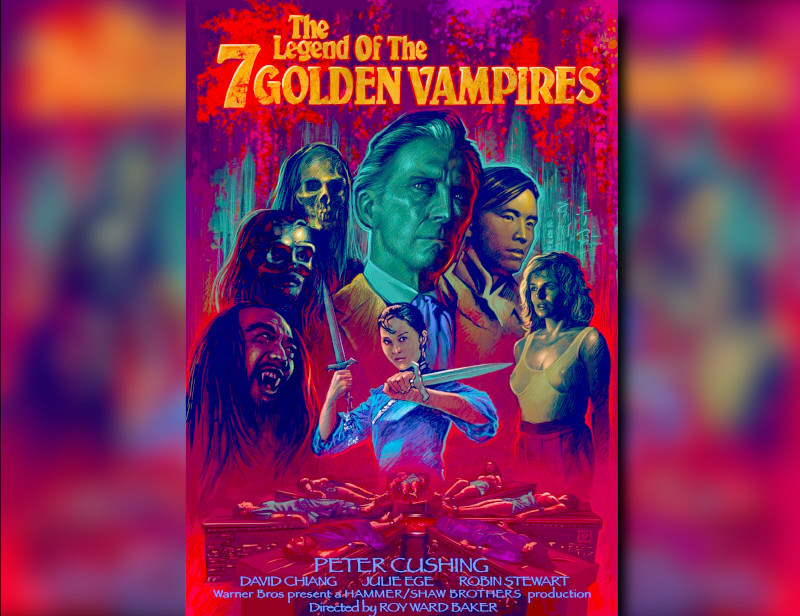
Dracula was back again in 1974, in one of Hammer Films goofiest movies, The Legend of the 7 Golden Vampires. This was meant to cash in on the kung-fu craze set off by the Bruce Lee films of that time.
Van Helsing, Peter Cushing again, is recruited by a team of kung-fu masters to help combat an army of vampire monsters menacing their village. We know that it is really Count Dracula who’s causing all the trouble, although he’s disguised as a Chinese wizard until the end.
I like The Legend of the 7 Golden Vampires, which is not saying it’s anything great. It’s fun. I like the karate versus undead fight scenes, the location filming, and Peter Cushing is welcome as Van Helsing one last time.
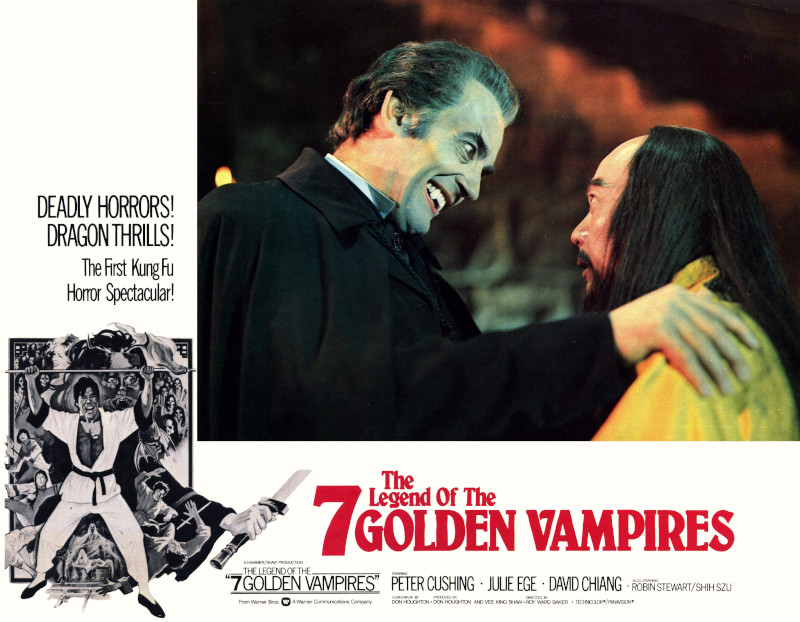
John Forbes-Robertson plays Dracula at the beginning and very end of the movie, and his acting is fine, but his vampire makeup job is cartoonish. I had a hard time taking him seriously, wearing so much clownish greasepaint.
The Legend of the 7 Golden Vampires signaled the end of Hammer’s long run of Dracula films. To varying degrees, I like them all, and recommend them. Try to watch them in order if you can.
Where to Watch The Legend of the 7 Golden Vampires (1974):
Count Dracula (1977)
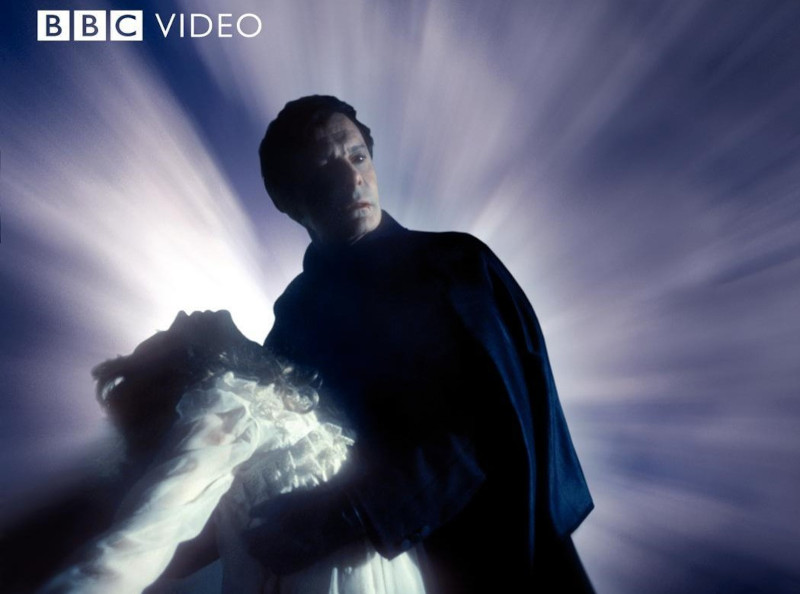
In 1977, the BBC in England released a TV movie retelling of Bram Stoker’s novel entitled Count Dracula, with Louis Jourdan as the Count. This was shown on the PBS stations in America back then, and that’s where I first saw it. It’s good! It sticks surprisingly close to the novel in most respects.
Louis Jourdan seems an unusual choice for Dracula, but he does all right. He has a suave, “resistance is futile” vibe to his performance.
The trouble with the movie, as it is with so many horror movies, is it needed a bigger budget. Most of the movie is shot on videotape. The videotape of the 1970s is tough on the eyes, and makes everything look flat and cheap. I wish they’d been able to spend the extra bucks to buy film stock. Still, the BBC’s Count Dracula is worth a watch, in spite of potential eyestrain.
Where to Watch Count Dracula (1977):
Love at First Bite (1979)
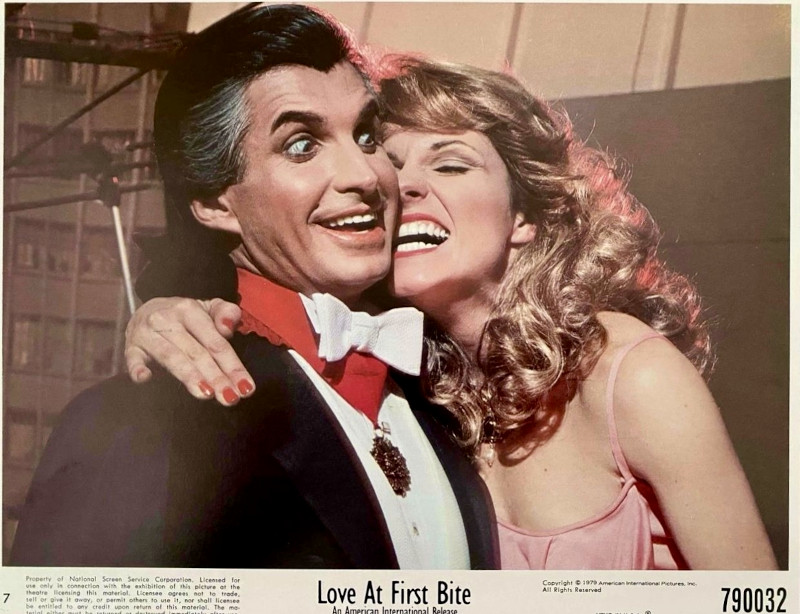
1979 was another big year for the Count. He headlined four successful movies that year, including this one.
Love at First Bite was a comedy that had Dracula coming to America searching for his reincarnated lost love. The movie is good-natured, very dated, and spoofs the old Universal-style vampire films.
Richard Benjamin is funny in the Van Helsing-type role, and George Hamilton makes for a good comical Count. At the time, Hamilton was famous for his amazing suntan, so him playing sun phobic Count Dracula gave folks an extra giggle.
Where to Watch Love at First Bite (1979):
Nosferatu the Vampyre (1979)
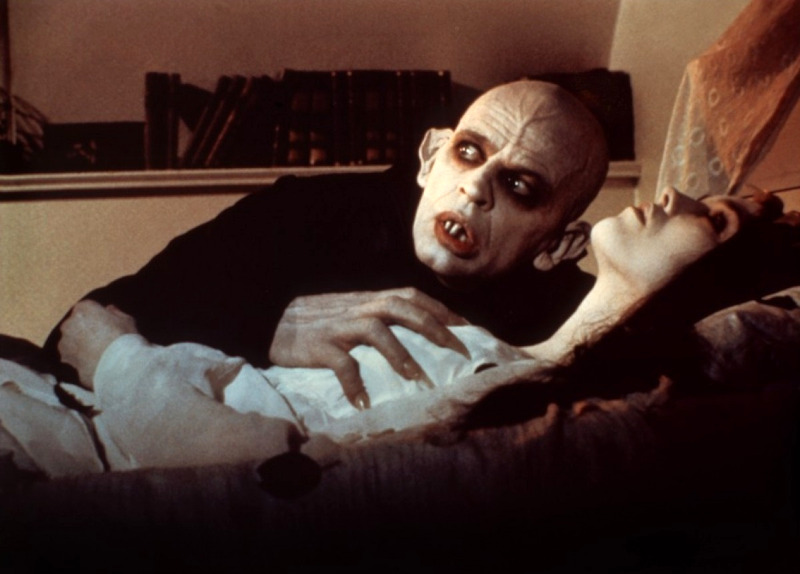
On the more high-toned “art film” side, there was a new version of 1922’s Nosferatu: Nosferatu the Vampyre.
Klaus Kinski plays the vampire Count, in makeup very similar to the original movie. He looks and acts very rodent-like.
Nosferatu ’79 usually gets favorable reviews, but I don’t care for it much. It looks good, but glaciers move faster than this movie. It also takes itself very seriously, more than the pulp fiction subject matter deserves. Watch it and decide for yourself. There are two versions, one was filmed in English and the other in German. The German language version is said to be the better of the two. I’ve seen both, and had the same (yawn) reaction both times.
Where to Watch Nosferatu the Vampyre (1979):
Dracula (1979)
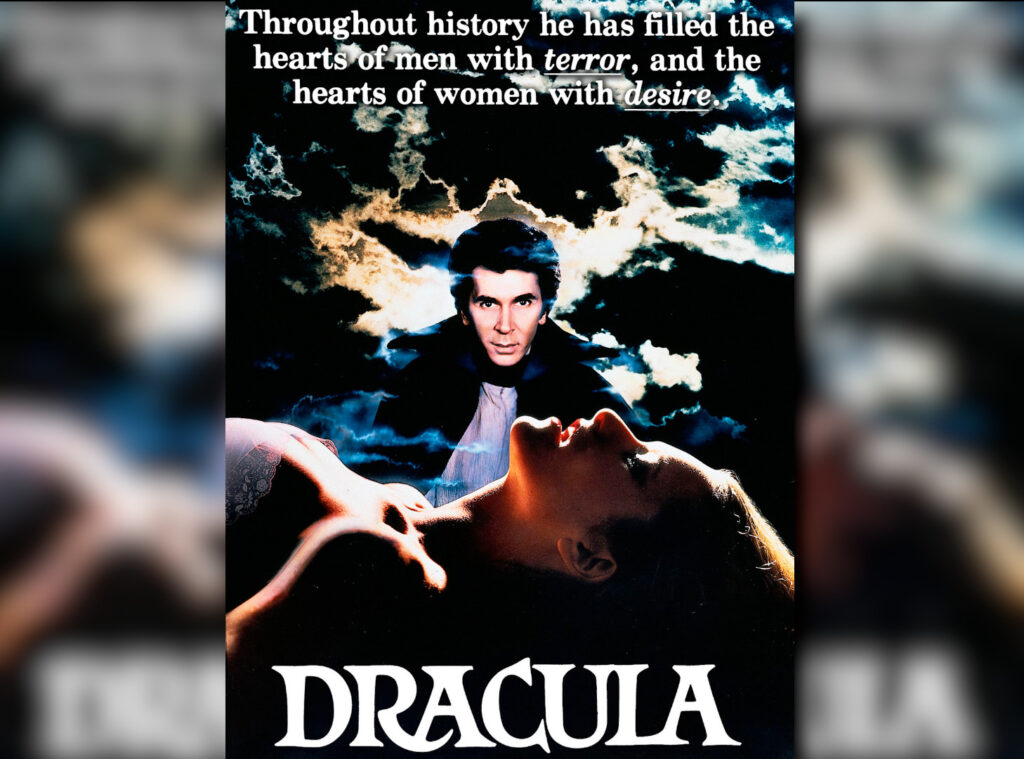
Back at Universal Studios, Dracula returned. Frank Langella had been starring in a revival of the Dracula stage play on Broadway to rave reviews. The folks at Universal got him to repeat his role in a big budget movie adaptation. (This was the same play that made Bela Lugosi famous all those years ago.)
Dracula (1979) is a mixed bag of a movie. Langella’s Dracula is such a romance novel dreamboat, he doesn’t need any hypnotic whammy powers to attract the ladies. The problem is, there seems to be two very different movies trying to occupy the same space — the traditional romance movie and the horror movie.
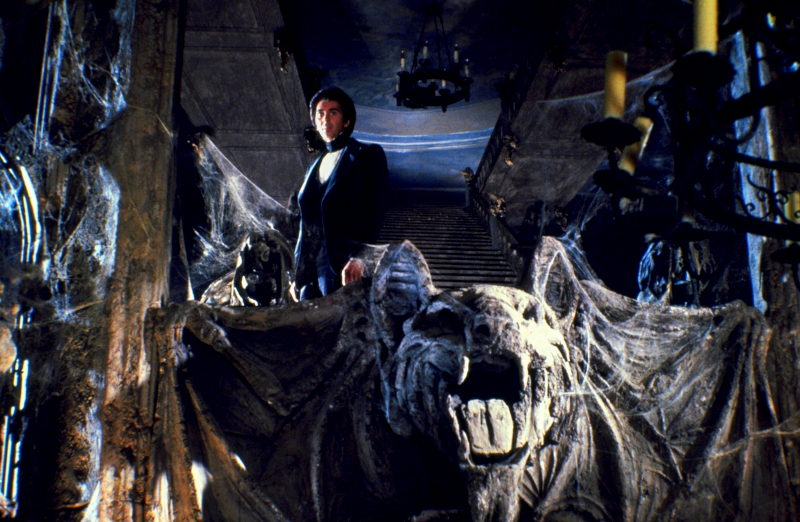
When Dracula does something horrible, it doesn’t fit his character. It’s not Frank Langella’s fault, but the script’s. He makes a fine Dracula, and I wish he’d done a (better written) sequel.
The movie has impressive sets, costumes, acting legend Laurence Oliver as Van Helsing, and this was the first vampire movie I’d seen where the fake bats appeared realistic. Points for that. I think the good parts of this movie outweigh the bad. Give it a look!
Where to Watch Dracula (1979):
Salem’s Lot (1979)
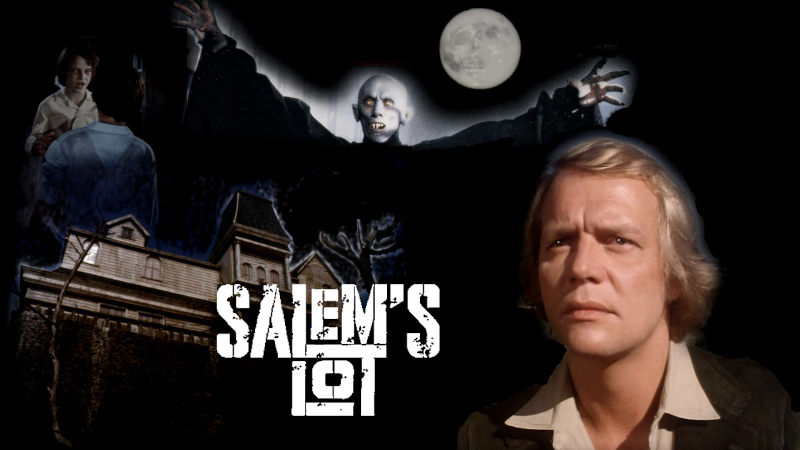
Lastly, in ’79, we got the film version of Stephen King’s novel, Salem’s Lot. This was originally shown in two parts on television, but is available now as one long movie. There is a much condensed 90-minute version, too, but stick with the original if you can.
Stephen King, when he wrote the novel, asked “what if Dracula relocated from Transylvania to a small town in Maine?” The answer was, you’d end up with a town full of vampires. Great stuff!
For a movie adaptation of a book, Salem’s Lot (1979) sticks very close to the source material. The biggest difference is in the Dracula character, renamed Kurt Barlow. (A better alias than Alucard, right?). In the novel, Barlow is much more of a carbon copy of the Bela Lugosi, Universal Studios-style Dracula. A handsome charmer. In the movie, they went full Nosferatu and then some. Barlow gets my vote for the ugliest, scariest looking vampire in movies. Reggie Nalder as Barlow makes Max Schreck look not so bad after all.

The movie is a little slow to start, as it introduces a large cast, but picks up speed as it goes along. There are a number of suspenseful moments, and a fair amount of bloodshed for 1970’s TV. Worth watching, and a good one to end with, as we say goodbye to the disco decade.
Where to Watch Salem’s Lot (1979):
Dracula In the 1980s
The 1970s sagged with the weight of movies featuring Count Dracula. FAR more films than those I’ve already mentioned. The 1980s has some of my favorite vampire movies, like Near Dark and The Lost Boys, but very few that spotlight Count Dracula. So, let’s take a look at the couple that do…
Fright Night (1985)
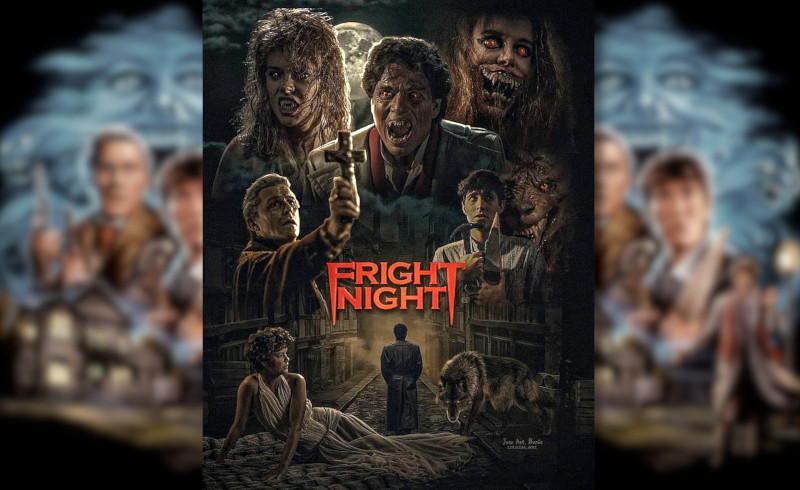
In 1985, Dracula (in my opinion) adopted the alias Jerry Dandrige, and moved into the house next door to teenage doofus Charlie Brewster. When Charlie realizes Dracula is his new neighbor, the fun begins.
This is one of my favorite monster movies. Mixing horror and comedy is tricky, but Fright Night manages to succeed. Jerry/Dracula is handsome, charming, and a snappy dresser. He can also morph into some really scary-looking monsters when he’s ticked off.
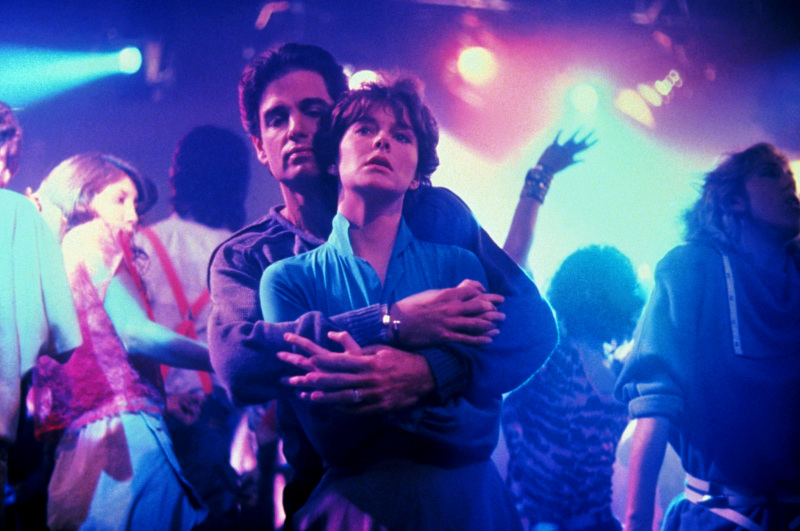
The 1980’s were the years when the special makeup effects people for movies were like rock stars. This was before CGI, so what you saw on film were actual physical effects. The FX crew for this movie hit it out of the park.
Besides Jerry, we’ve got werewolves, zombies, vampire brides, monster bats. There’s a lot to see and enjoy. Characters you can care about in a suspenseful, fun story. If you’ve never seen Fright Night, check it out. The 2011 remake is okay, and the 1988 sequel, Fright Night 2, is a letdown. Stick with the first and best!
Where to Watch Fright Night (1985):
The Monster Squad (1987)

Two years later, in 1987, the real Count Dracula finally reappeared. No fake names this time. The movie is The Monster Squad, and Dracula has enlisted a lot of classic monsters to help him obtain a powerful magical amulet — the Wolf Man, the Mummy, Frankenstein’s monster, the Creature from the Black Lagoon, even some vampire brides.
Standing against Dracula are a bunch of little kids who are big fans of old monster movies. Who better to save the world, right?
The Monster Squad bombed at the box office when it first came out, but found its audience on television. Now it’s considered a cult classic. It’s not perfect, but it’s fun.
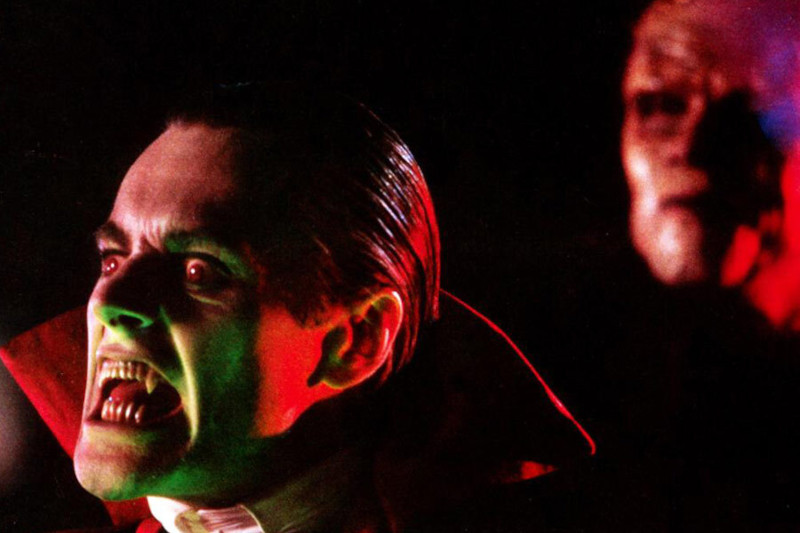
Duncan Regehr does an excellent job playing Dracula. Too bad he didn’t get to play the role again elsewhere.
Stan Winston’s makeup effects crew does stellar work on all the supporting monsters in the movie. Nice updates on the old Universal Studios standards. The movie’s fun for fans of the oldies, and pretty good for little kids, although some plot points and dialogue are cringe-inducing. Anyway, it’s good to see the Count strutting his stuff once again!
Where to Watch The Monster Squad (1987):
Dracula In the 1990s
We arrive in the 1990s with quite a few vampire movies available, like Innocent Blood and From Dusk till Dawn, but only two that headline Count Dracula…
Bram Stoker’s Dracula (1992)
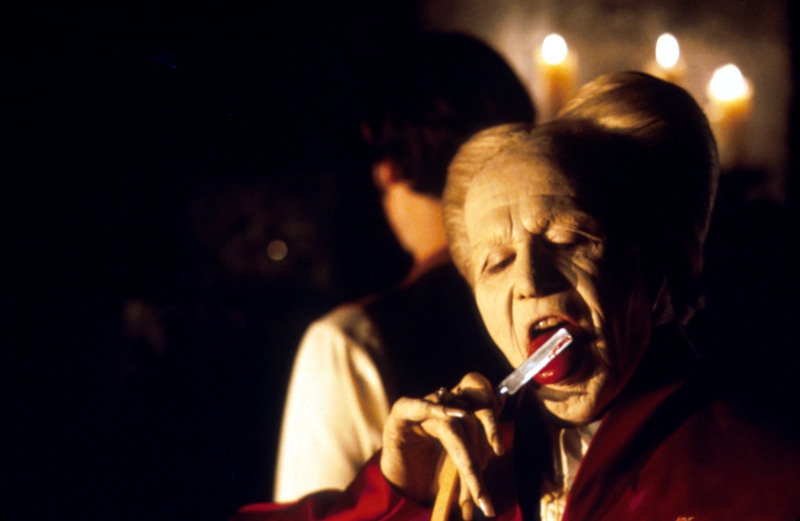
1992’s Bram Stoker’s Dracula (B.S. Dracula?) is Godfather director Francis Coppola’s lavish retelling of the original novel. This movie, in many ways, is the closest yet to the source material. For the first time, all the major players from the book appear in the movie. It’s a big cast, but they’re each distinct characters.
All the major beats from the book are here, too. The biggest change from the novel, and it’s a big one, is the “lost love” motivation angle for Count Dracula. I think in some ways it really adds to the story, but it does soften his monster persona. Dracula, like Barnabas Collins in Dark Shadows, sees Winona Ryder’s Mina as the reincarnation of his beloved from the good old days. The book’s Dracula only sees one more hottie’s neck to bite. (He’s really not terribly deep…)
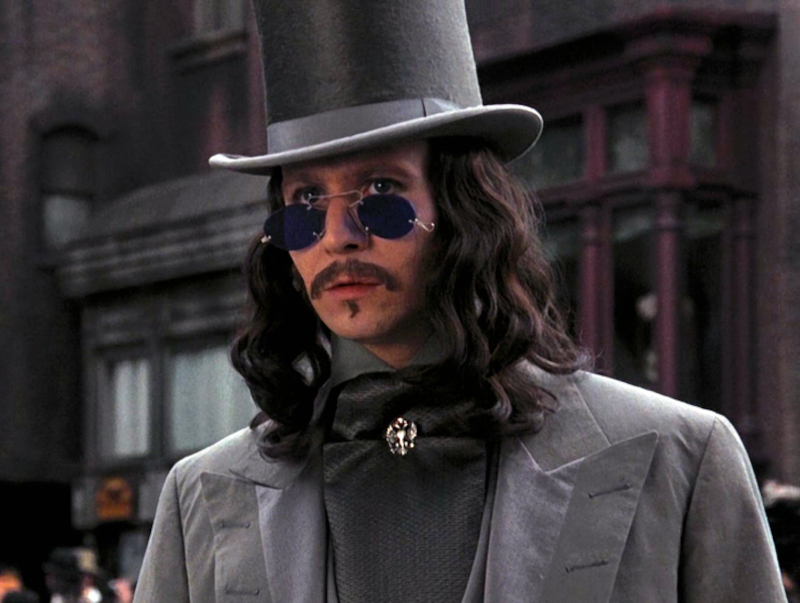
Bram Stoker’s Dracula has beautiful sets, costumes, good actors (I had no problem with Keanu Reeves. He does fine.), and Oscar-winning makeups. Gary Oldman isn’t my idea of the perfect Dracula, but for this movie he’s all right. He’s awesome as the very old Dracula, a little less so as the young heartthrob. Still, this movie is very much worth seeing. Put it on your short list.
Where to Watch Bram Stoker’s Dracula (1992):
Dracula: Dead and Loving It (1995)
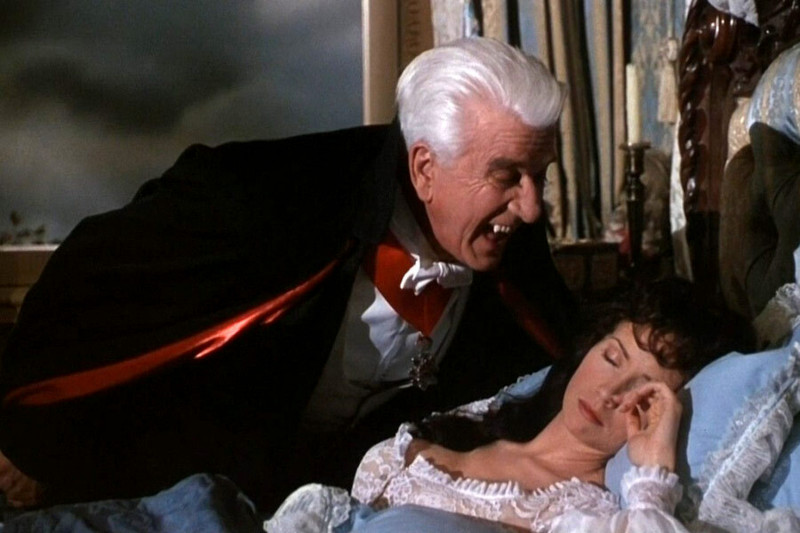
Three years later, Mel Brooks gave us Dracula: Dead and Loving It. The bulk of this comedy is a remake of the 1931 Lugosi Dracula, with a little Hammer Films thrown in.
What surprised me most was Leslie Nielson doing a better-than-expected job as Dracula. He manages the Lugosi accent and mannerisms well, and he doesn’t humiliate himself in the role.
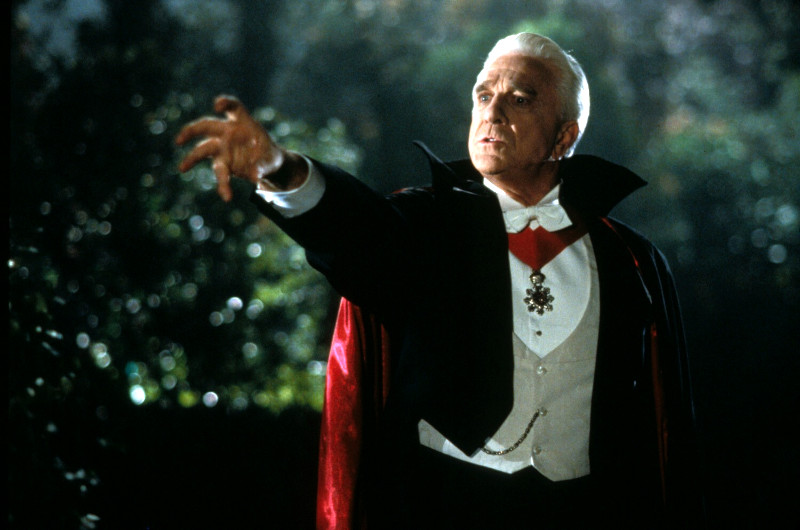
Dracula: Dead and Loving It isn’t terrible, and it isn’t great. It looks good, and all the actors do their best with the material. Some of the humor works well, but an equal amount falls flat. And then gets pounded into the ground. This is not on a par with Brooks’ Young Frankenstein. But, if you really need to see a Dracula comedy from the 1990s, then this is the movie for you.
Where to Watch Dracula: Dead and Loving It (1995):
Dracula In the 2000s
Dracula 2000 (2000)
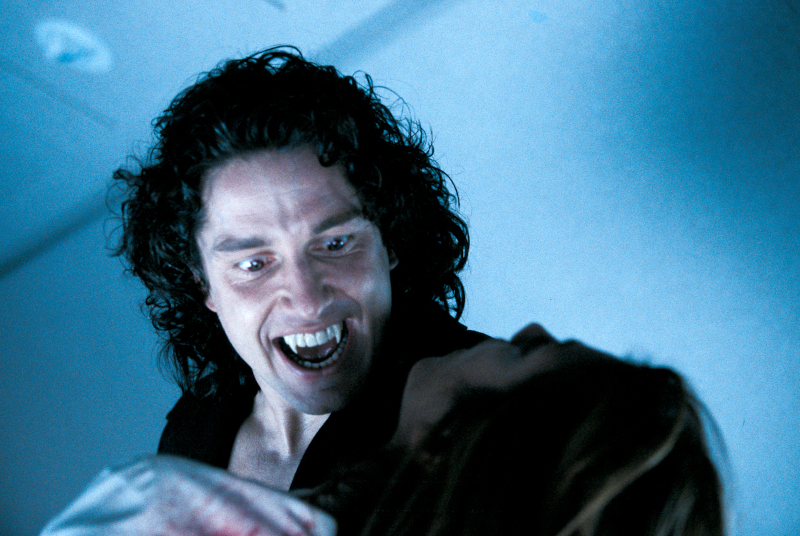
I can’t think of a more appropriately titled movie to start the next decade and new millennia with than Dracula 2000. This movie was released in the year 2000 (duh!), and features Gerard Butler as Count Dracula.
Gerard Butler would go on to portray the King of Sparta in the movie 300 and the lead in the musical Phantom of the Opera. As Dracula in this movie, he’s all right. He spends a lot of his time haunting the dreams of the lead actress. (Dream hauntings seem like a theme for Producer Wes Craven…).
The story sees Dracula released from his sealed coffin prison, and he sets out looking for his soulmate in modern day New Orleans. Christopher Plummer is Van Helsing, back in action trying to fight Dracula.
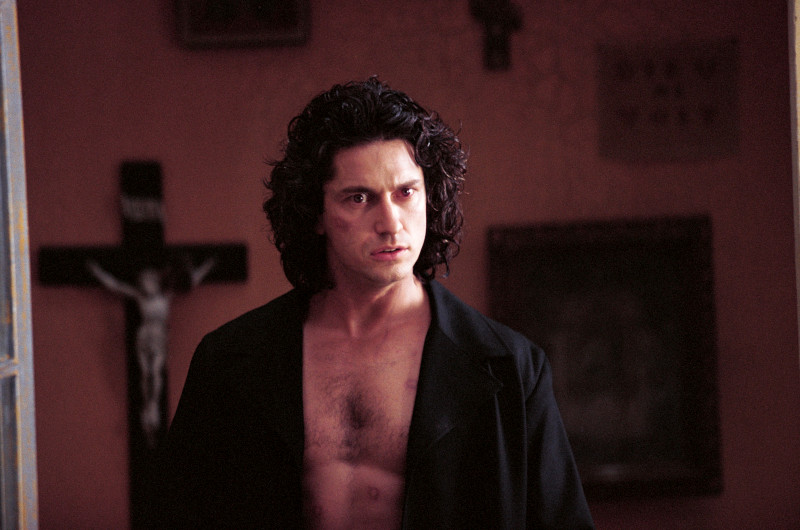
Dracula 2000 is decent, if not awesome. It moves along briskly, the effects work is very good, and the cast is capable. It has an interesting theory for explaining Dracula’s origin.
I have to say this “Dracula in present day” is superior to Hammer’s disappointing Dracula A.D. 1972. I didn’t find Dracula 2000 very involving, but I didn’t get bored, either. Give it a watch, and let me know what you think!
Where to Watch Dracula 2000 (2000):
Blade Trinity (2004)
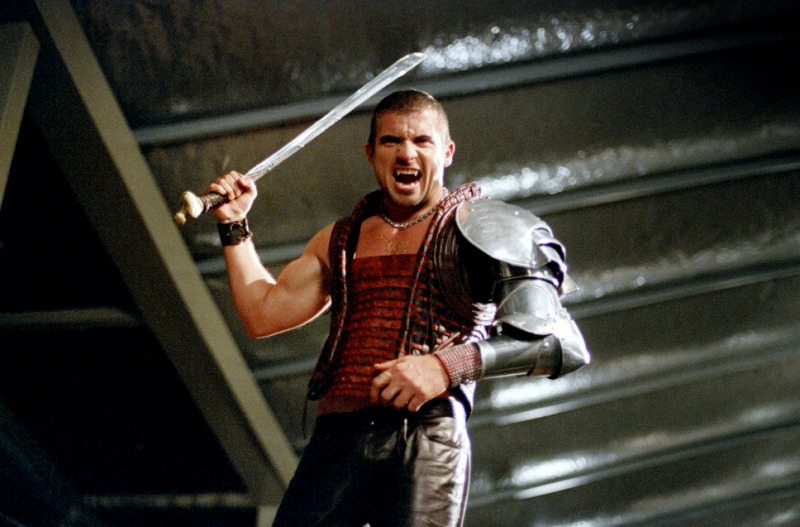
In 2004 Dracula was revived in Blade Trinity. This was the third Blade movie with Wesley Snipes as the title character. As I shared earlier, the vampire hunter originated in Marvel comic book’s Tomb of Dracula.
Blade Trinity has lots of action, special effects, and bloodshed like the two previous Blade movies.
Dracula didn’t make much of an impression on me in this story. He was just one more scary vampire among the many that Blade and his team have to karate kick into dust.

The three Blade movies are all fun and worth watching, but Blade Trinity is the lesser of the three, despite its guest star, Count Dracula.
Where to Watch Blade Trinity (2004):
Van Helsing (2004)
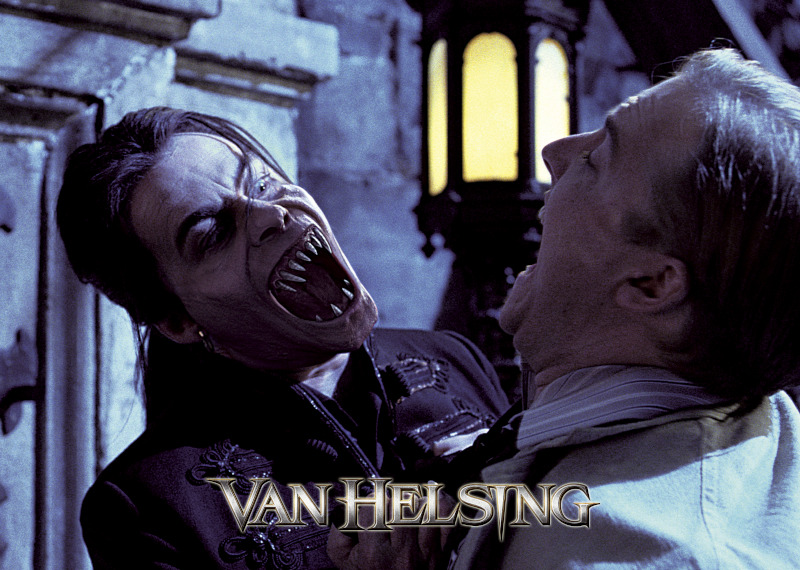
Van Helsing, also from 2004, is one of my favorite bad movies. Hugh Jackman is the title character — the monster fighter who faces off against Mister Hyde, Frankenstein, the Wolf Man, vampire brides, and (of course) Count Dracula.
This wildly overstuffed turkey tickles my funny bone. It’s filled with eye-popping visuals, and a story that makes almost no sense at all.
Richard Roxburgh seems to have a good time playing Count Dracula. He’s not frightening, but he is flamboyant. Very much like the entire movie.

Universal Studios had hoped Van Helsing would jumpstart a new wave of monster franchise movies for them, but alas! It wasn’t meant to be. I hope they keep trying to get it right!
Where to Watch Van Helsing (2004):
Dracula In the 2010s
Hotel Transylvania (2012)
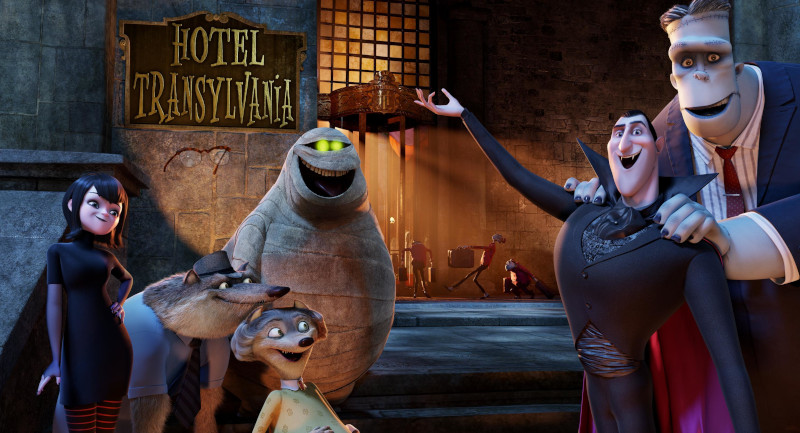
In 2012, Dracula played host to a castle full of monsters and one human airhead in Hotel Transylvania.
I like this cartoon movie very much. Dracula is the loving but over-protective dad to a teenage daughter, Mavis. Dracula has turned his castle into a hotel that caters to monsters only, and promises to keep them safe from the menace of dangerous humans. When a teenage human boy turns up at the hotel and falls for Mavis, Dracula sees red.
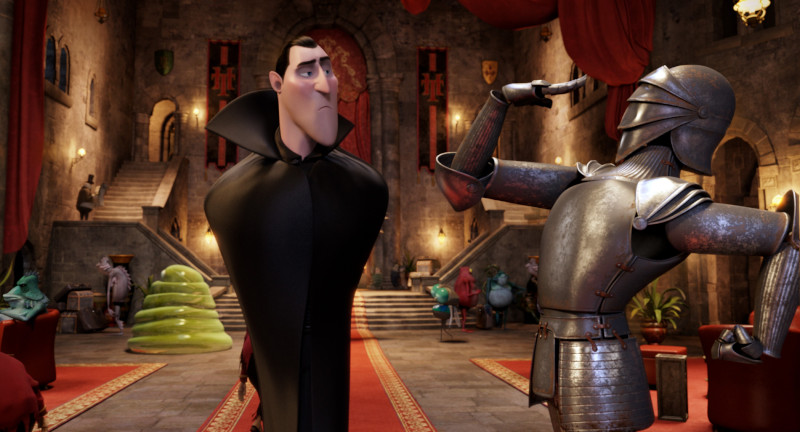
The story of how all the monsters adjust to the changing world around them is charming and funny. The second Hotel Tansylvania movie was pretty good, the third movie is forgettable, and the fourth one is just awful. Enjoy this first one and then part two. It’s probably my favorite Dracula movie of the 2010s, and it’s great for kids!
Where to Watch Hotel Transylvania (2012):
Dracula Untold (2014)

In 2014 Universal Studios tried again with Dracula Untold. This tells the origin story for Dracula, and how he became a vampire.
Dracula Untold gives us a basic superhero origin movie, with the hero gaining all the powers that he’ll need to defend his family and kingdom from the invading bad guys.
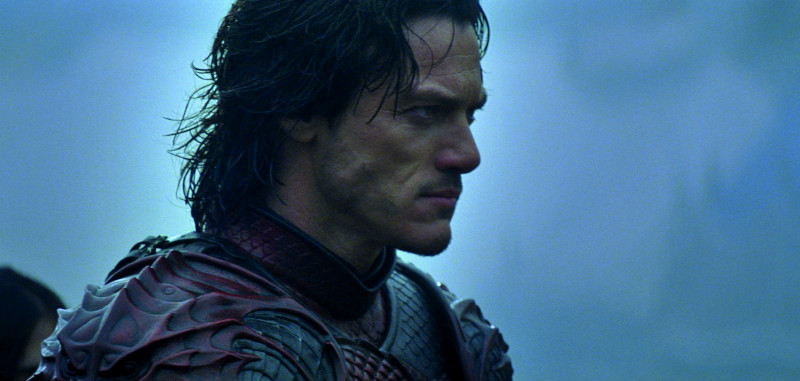
Luke Evans makes a handsome and noble Dracula, and he’s easy to root for. The movie’s ending didn’t grab me, but I liked it over all. I wish Dracula Untold had done better at the box office, so we might have gotten an improved sequel, with Evans as the Count.
Where to Watch Dracula Untold (2014):
Dracula In the 2020s
Renfield (2023)

Moving on, in 2023 we got two big screen Dracula movies. First up: Renfield, with Nicholas Hoult as Dracula’s long-suffering slave, and Nicholas Cage as his abusive master, Count Dracula.
Renfield is a fun, action-packed and very bloody movie. Both Nicholases do excellent jobs bringing their characters to life. Nicolas Cage seems to be having a great time being the King of the Vampires. His Bela Lugosi accent wobbles a little, but that’s okay.
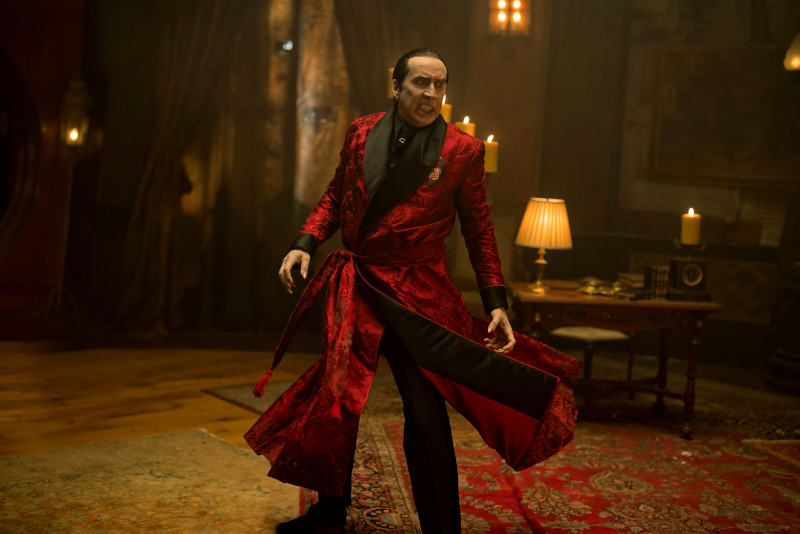
Catch this one when you see it listed. Renfield is a nice, uplifting, “change of pace” Dracula story.
Where to Watch Renfield (2023):
The Last Voyage of the Demeter (2023)

The Last Voyage of the Demeter is based on the chapter of Bram Stoker’s novel that charted Dracula’s ocean-crossing voyage from Transylvania to England. The sailing ship arrives in England with the entire crew missing or dead, so you’ve got a pretty good idea what to expect in the movie.
We get to know the ship’s crew a little before they sail, and then we watch them get picked off one by one as the voyage progresses.
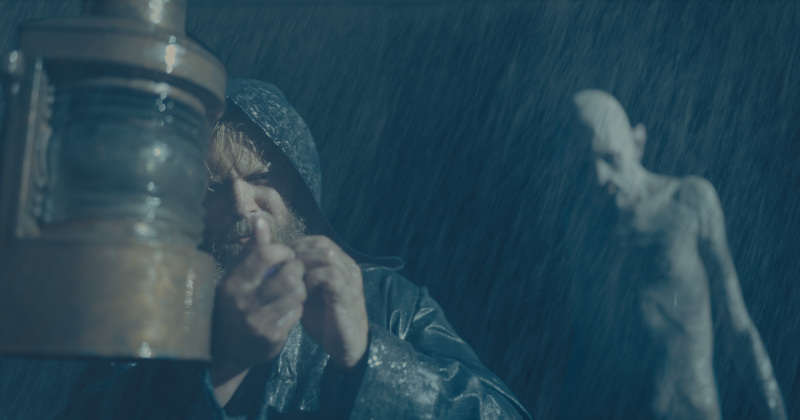
Dracula here most resembles the original Nosferatu, with some transformations into a giant bat creature.
The Last Voyage of the Demeter looks good, the actors play their parts well enough, but the movie seemed slow to me. What was a brief passage in the book seems stretched thin at an entire movie’s length. Some nice effects work, though. Not my favorite, but worth seeing once. Twice, if you’re scared of sailors and sailing ships.
Where to Watch The Last Voyage of the Demeter (2023):
Nosferatu (2023)

Finally, in 2023 and 2024, Dracula movies came full circle with two remakes of the original 1922 Nosferatu. The 2023 version stars Doug Jones as Nosferatu.
Doug Jones has played a lot of movie monsters over the years, like the Creature in The Shape of Water. He seemed to be doing a decent job as Nosferatu/Dracula, but the rest of this movie was so mind-numbingly amateurish and cheap-looking I bailed out after 45 minutes.
Most of my friends would tell you I’ll sit through anything, but this one stopped me. I feel sort of compelled to go back and watch it through to the end, like it’s some kind of endurance test. Maybe I will. Until then, I leave it up to you to watch and decide whether Nosferatu (2023) is worth your while.
Where to Watch Nosferatu (2023):
Nosferatu (2024)
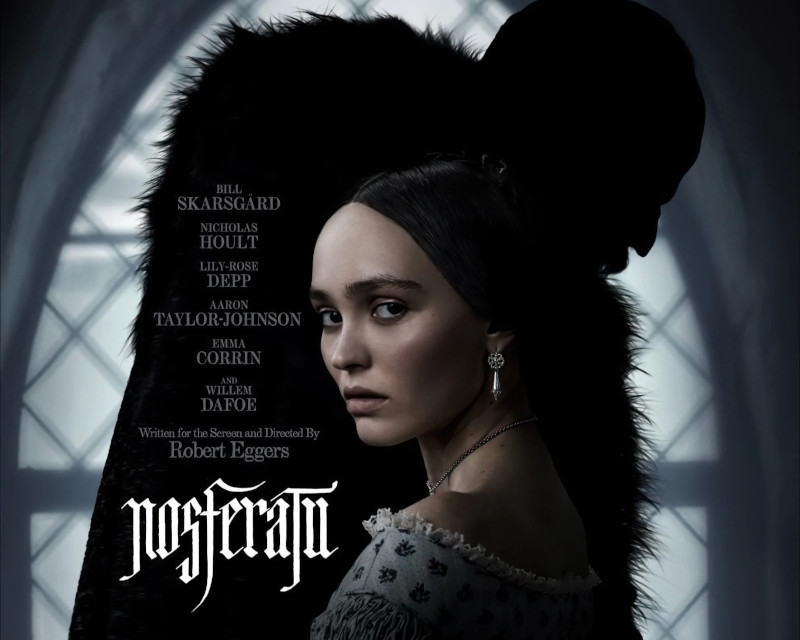
Christmastime 2024, we got the big-time prestige version of Nosferatu. This is high class horror, with top marks going to the look of the film, and all the actors.
I can’t fault the production, but I just didn’t enjoy this movie very much. It is so grim, glum, and downbeat.
Lily-Rose Depp does a great acting job as Nosferatu’s would-be girlfriend. She’s so convincing as someone who’s depressed, possessed, and going crazy, I was truly uncomfortable watching her fall apart. The rest of the cast is equally good in less showy roles.
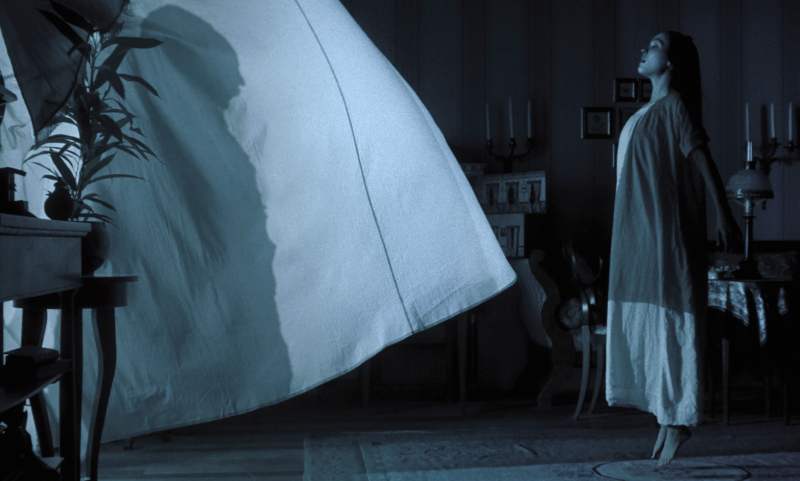
The biggest surprise for me was Nosferatu’s appearance. In this movie, he looks like some giant rotting Cossack zombie, with a walrus moustache. The only time I found him scary was when he jumps out of his coffin full frontal commando and charges toward the camera. Yikes! It’s the only time he moves quickly in the movie. And he talks even slower than I do, taking rattling breaths between every other word.
Nosferatu (2024) has lots of gore, un-sexy sex, and a runtime of over two hours. Yes, it’s worth seeing, but it’s not my idea of a good time. The thing I liked best about the movie? The totally awesome metal popcorn bucket replica of Nosferatu’s coffin they sold at the theaters!

Perfect container for your undead knick-knacks or vampire Barbie doll. Five-star snack bucket, top marks.
Where to Watch Nosferatu (2024):
What’s YOUR Favorite Portrayal of Dracula…?
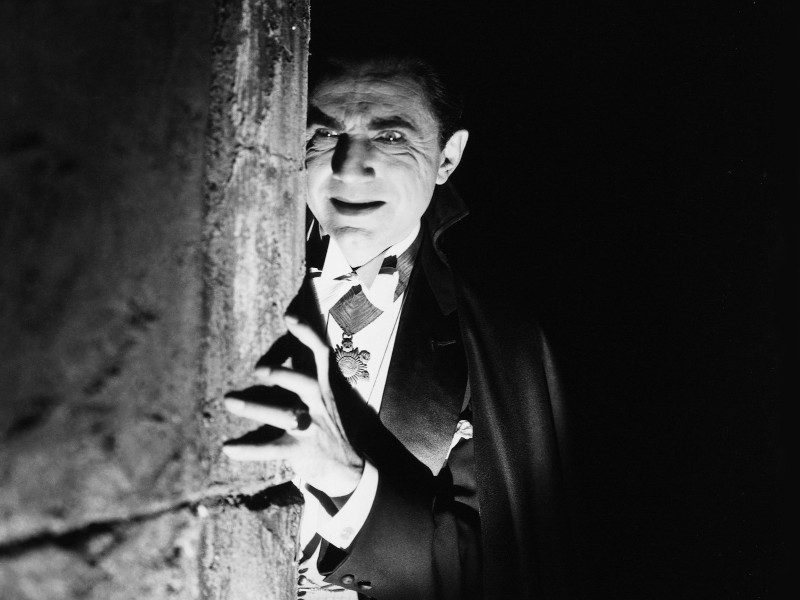
Time to wrap up, and let the Count snuggle into his coffin before sunrise. I’ve covered a lot of material here, and I’ve barely scratched the surface. I know I’ve left out many movies, and some may be your personal favorites. Type Dracula into the search bar of any streaming service and you’ll see how long this article could have been! He is overwhelming.
Dracula has gone from being a historically obscure sadistic tyrant, to the villain in Bram Stoker’s novel, then into the movies, and now… he’s everywhere. Dracula, along with Frankenstein and Santa Claus, is one of the most widely recognized legendary figures. He’s in the Public Domain in the best sense of that term. Dracula belongs to all the people of the world. And I think we’re lucky to have him.
So, here’s to Count Dracula! King of the Vampires, Lord of the Undead, sharp-dressed ladies’ man and bunny-toothed Nosferatu. He’s all that, and more.
Thanks for letting me ramble on. If I’ve dissed one of your favorite Dracula movies, praised one that you hate, or gotten something completely wrong then let me know! I want to hear it, so speak up. If you agree with everything I’ve said, you can tell me that, too. “Go safely, and leave some of the happiness you bring!” Peace out.

Most of the images for these reviews were purchased from MovieStillsDB & CineMaterial. Portrait of Vlad the Impaler is from the Public Domain. Other images are screenshots from DVDs we own or photos/scans of products we own. I layered vertical images over blurry backgrounds to make them horizontal.

